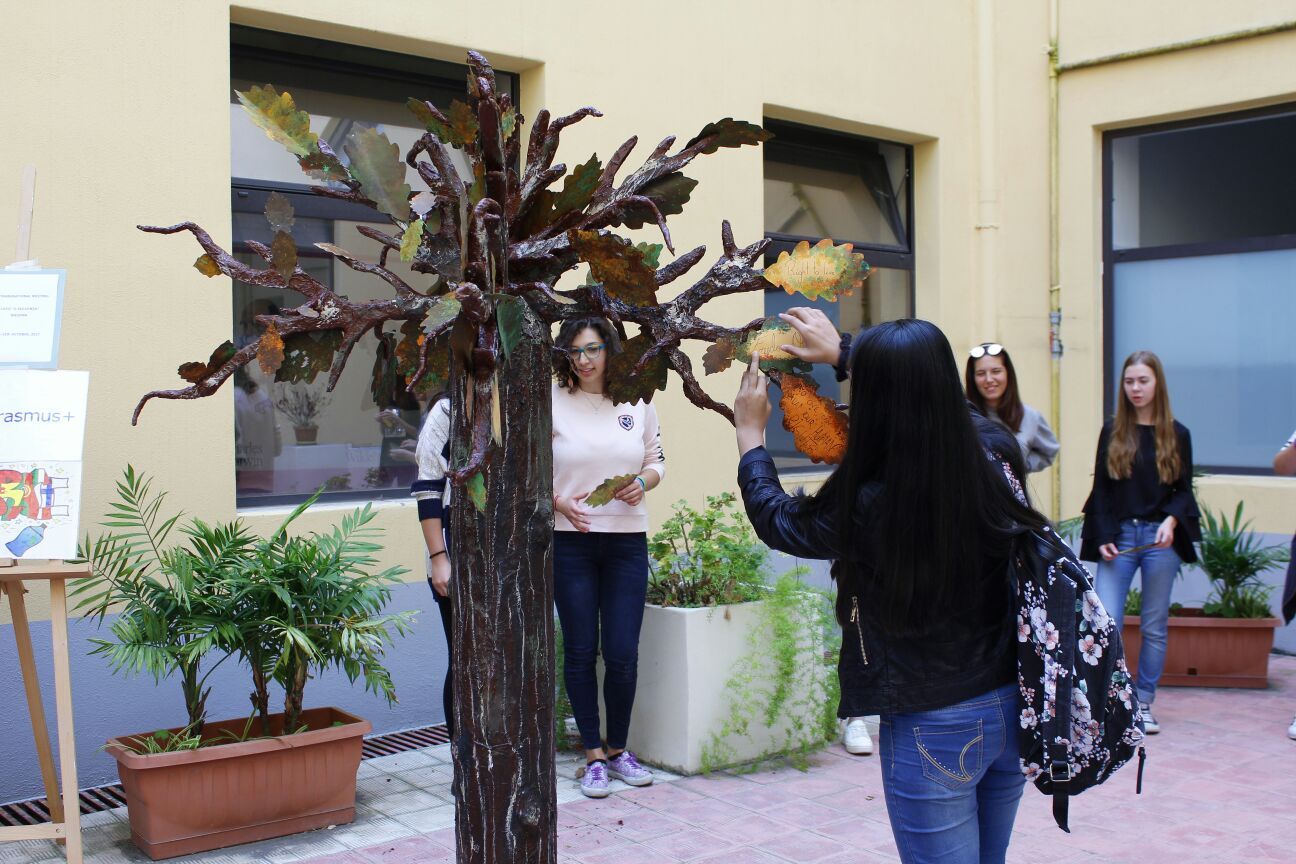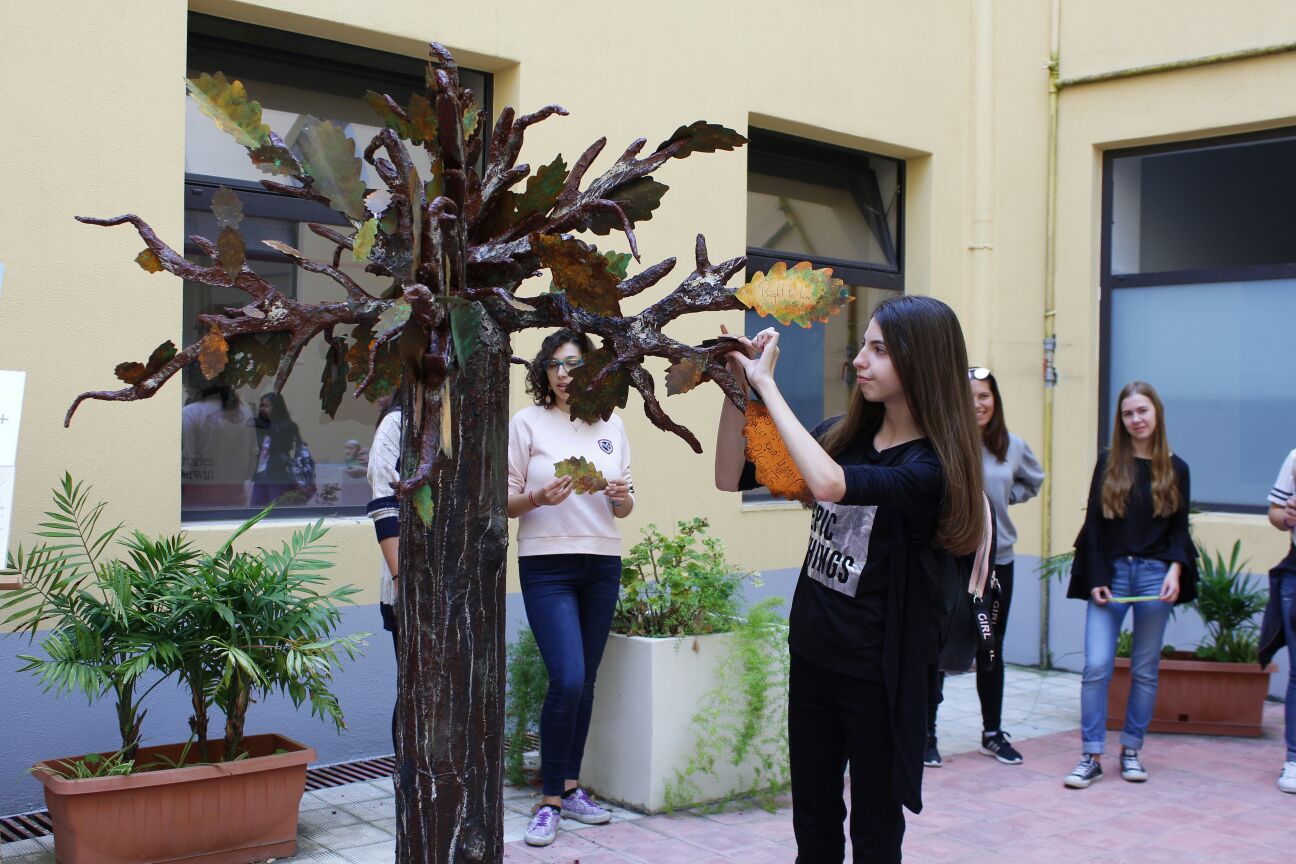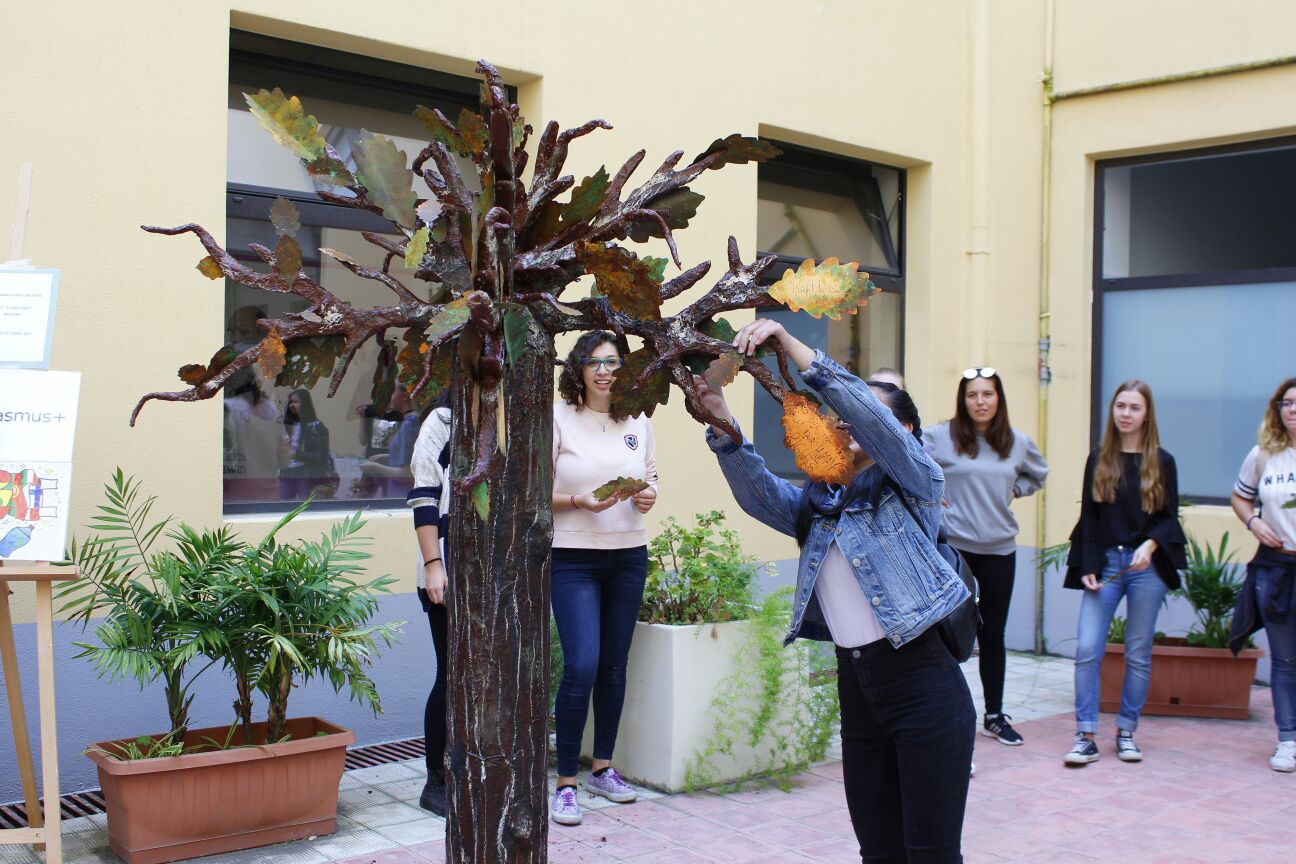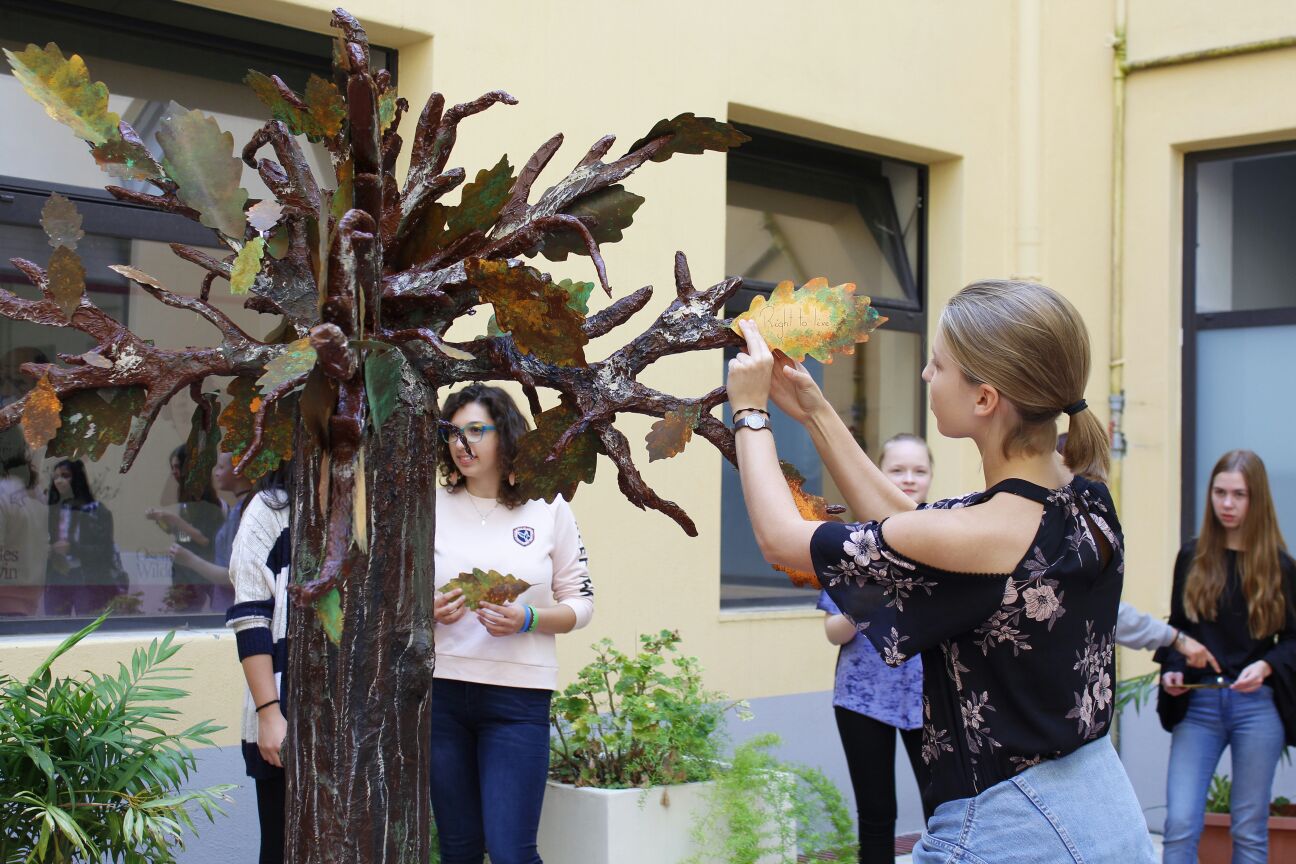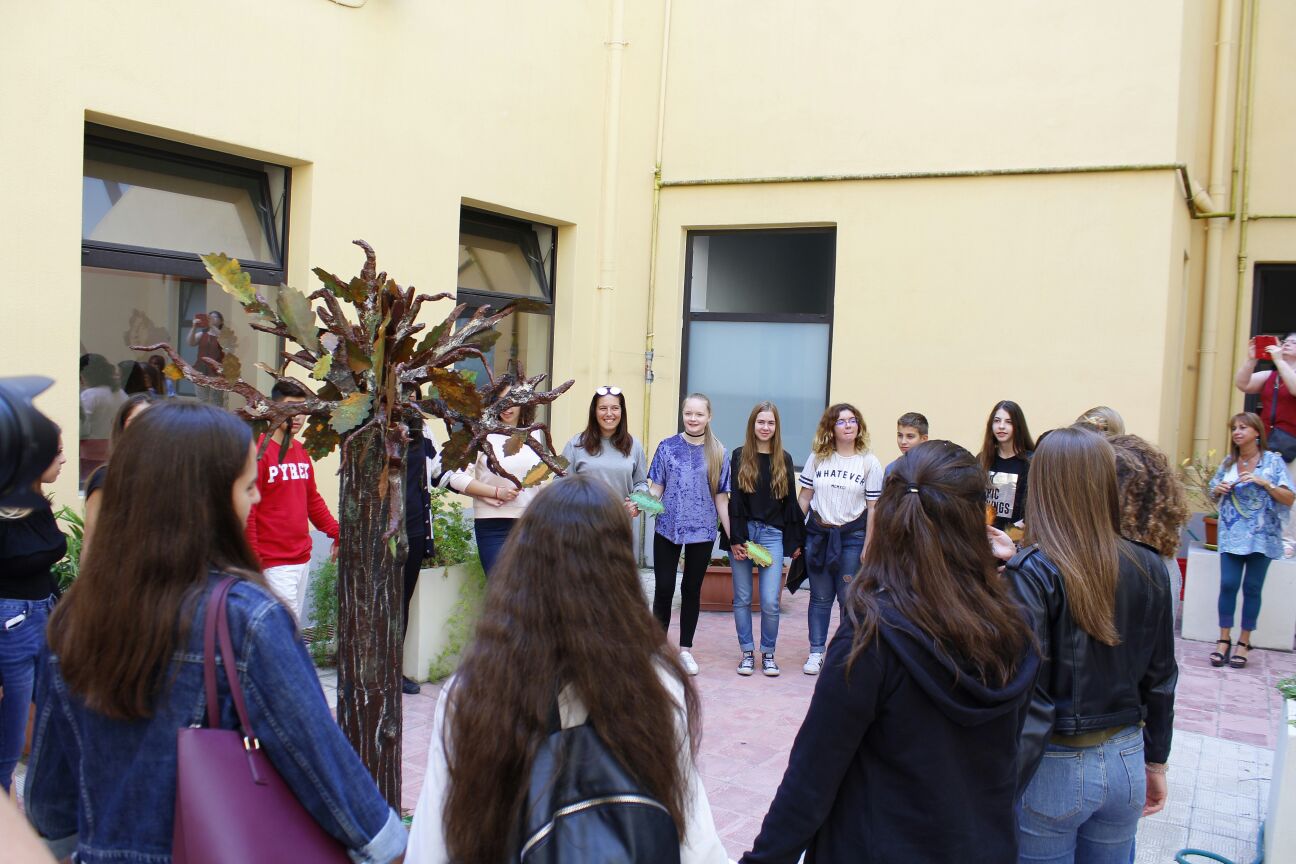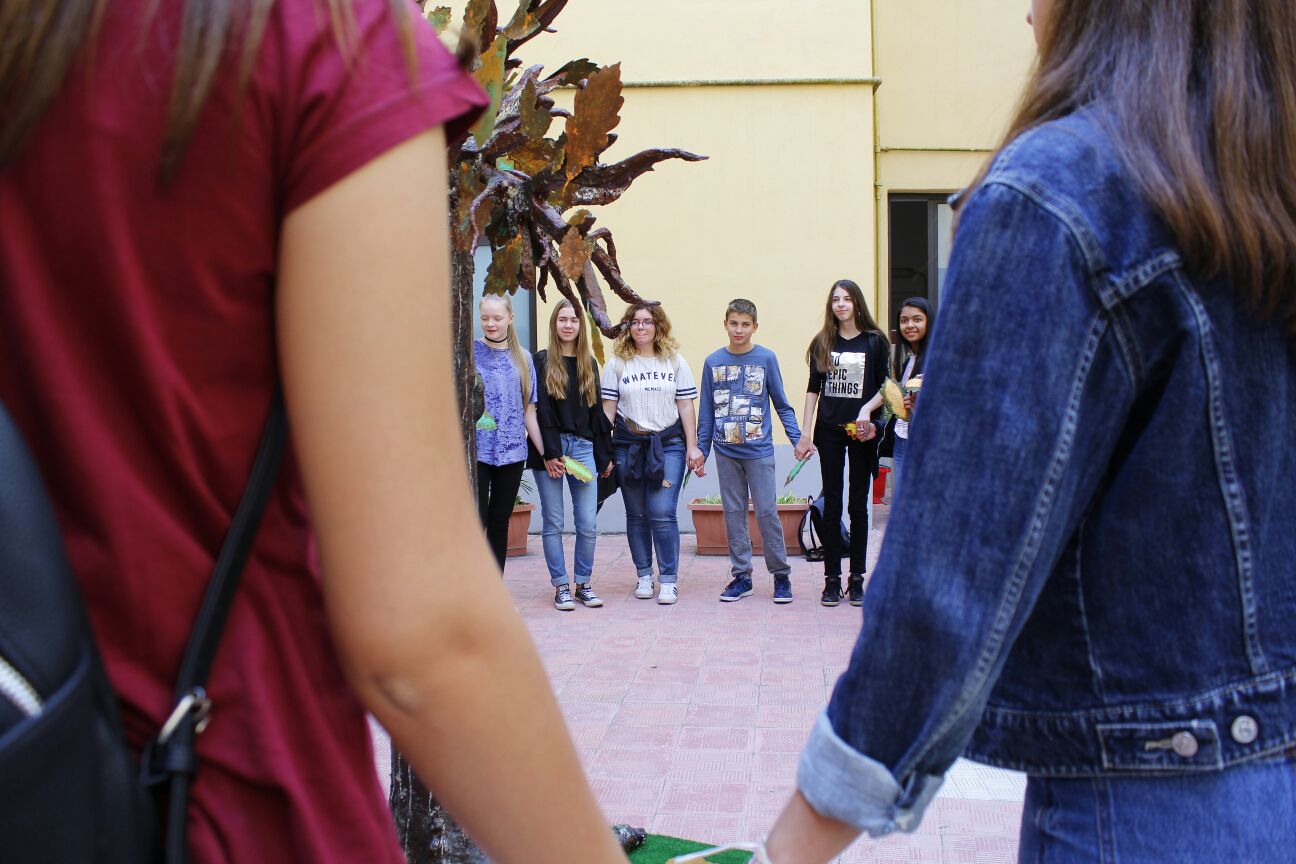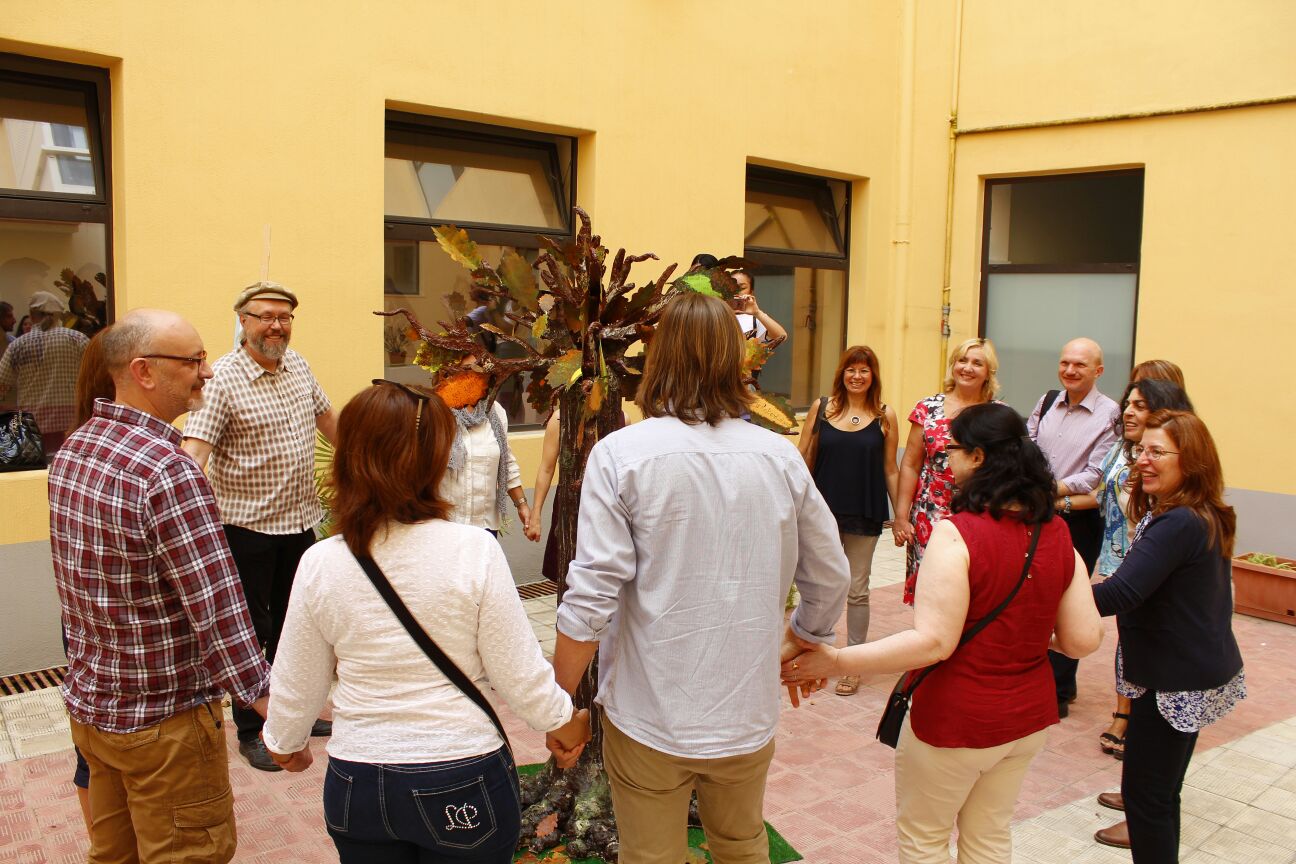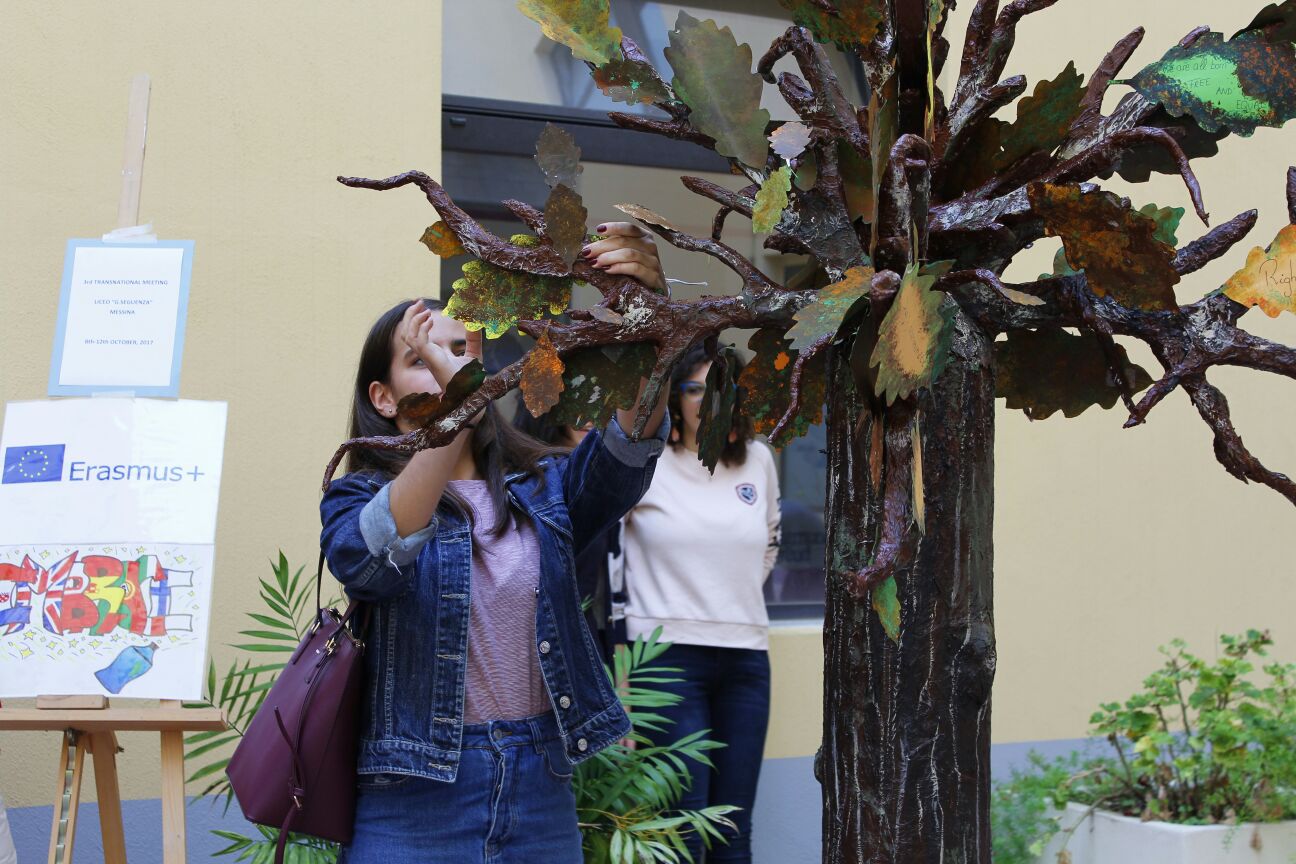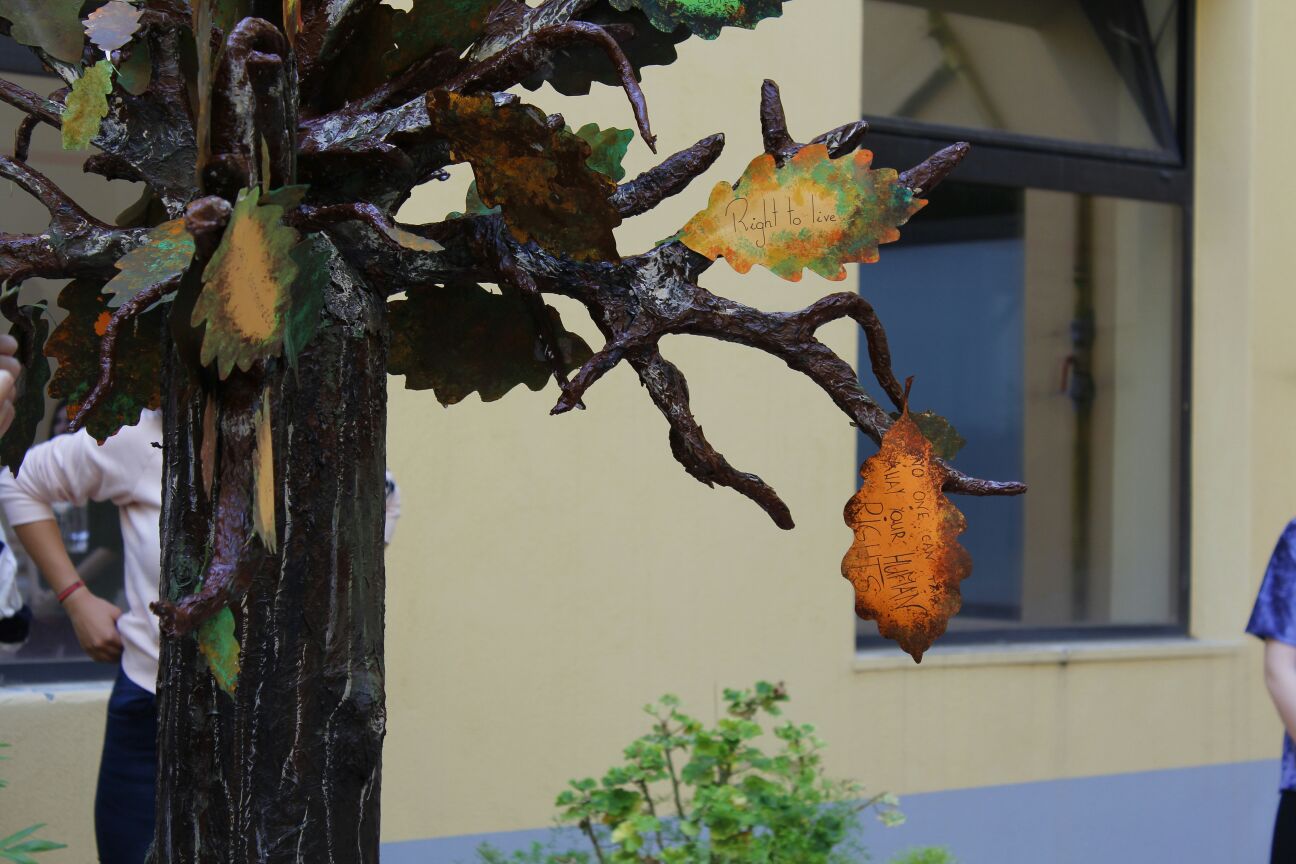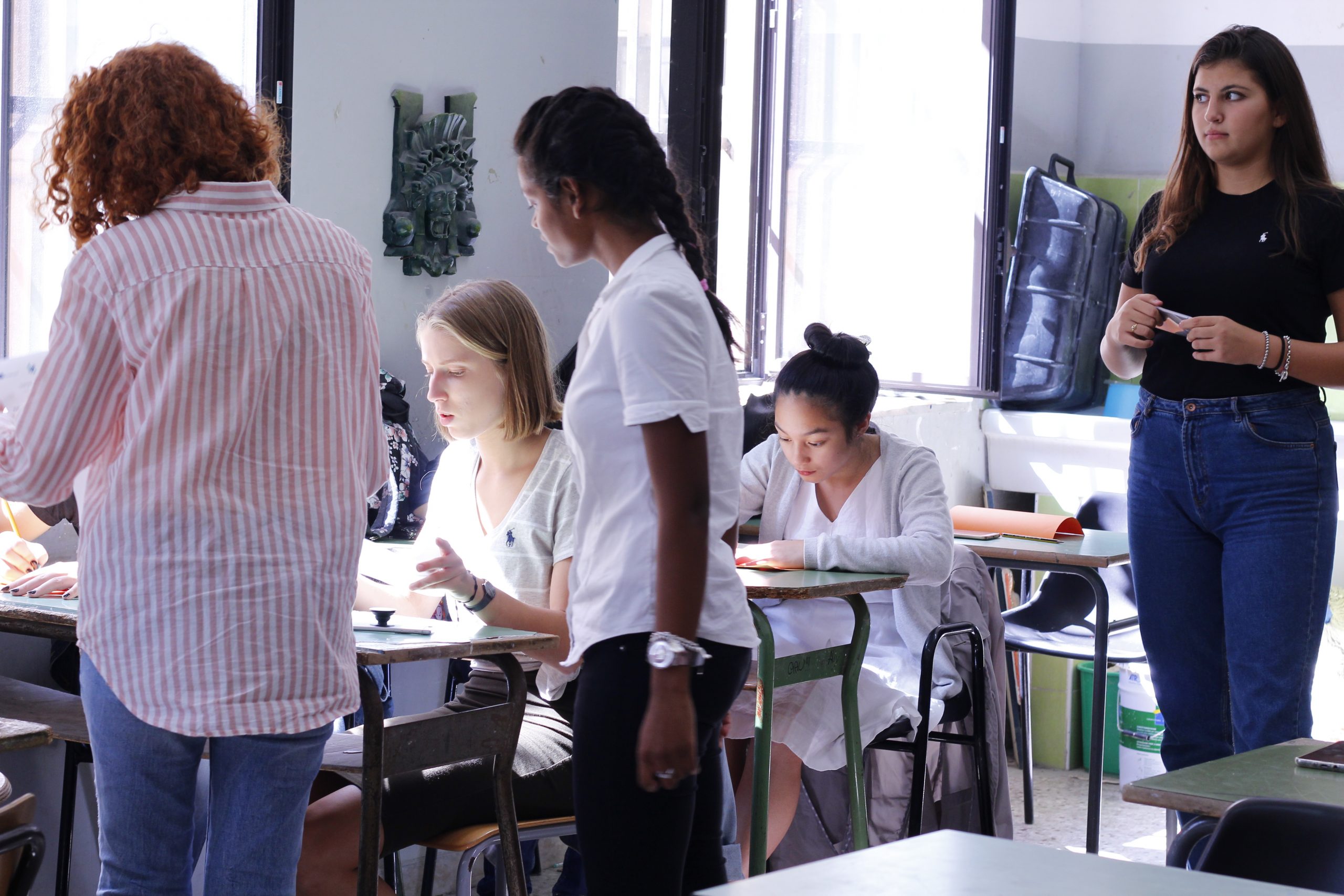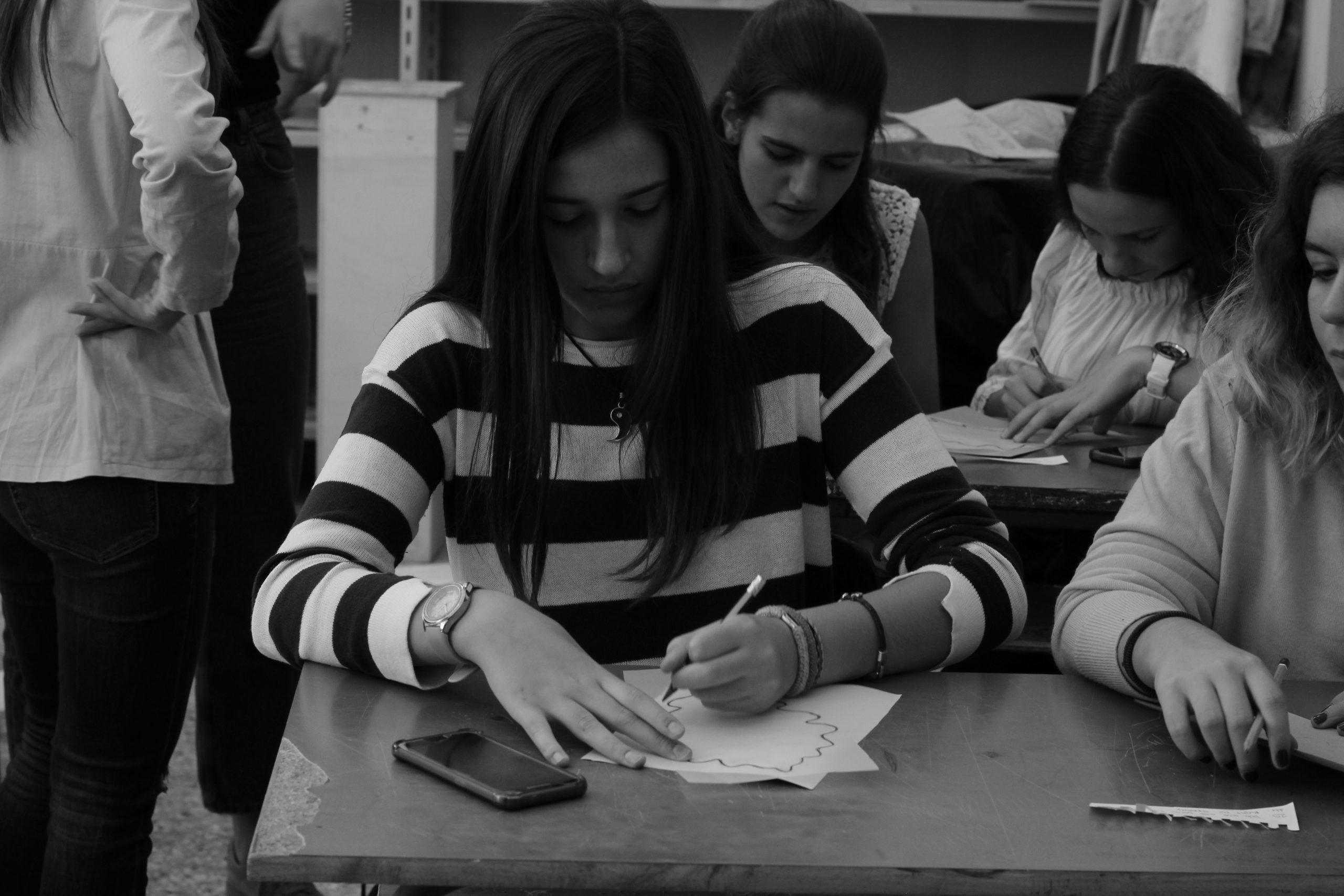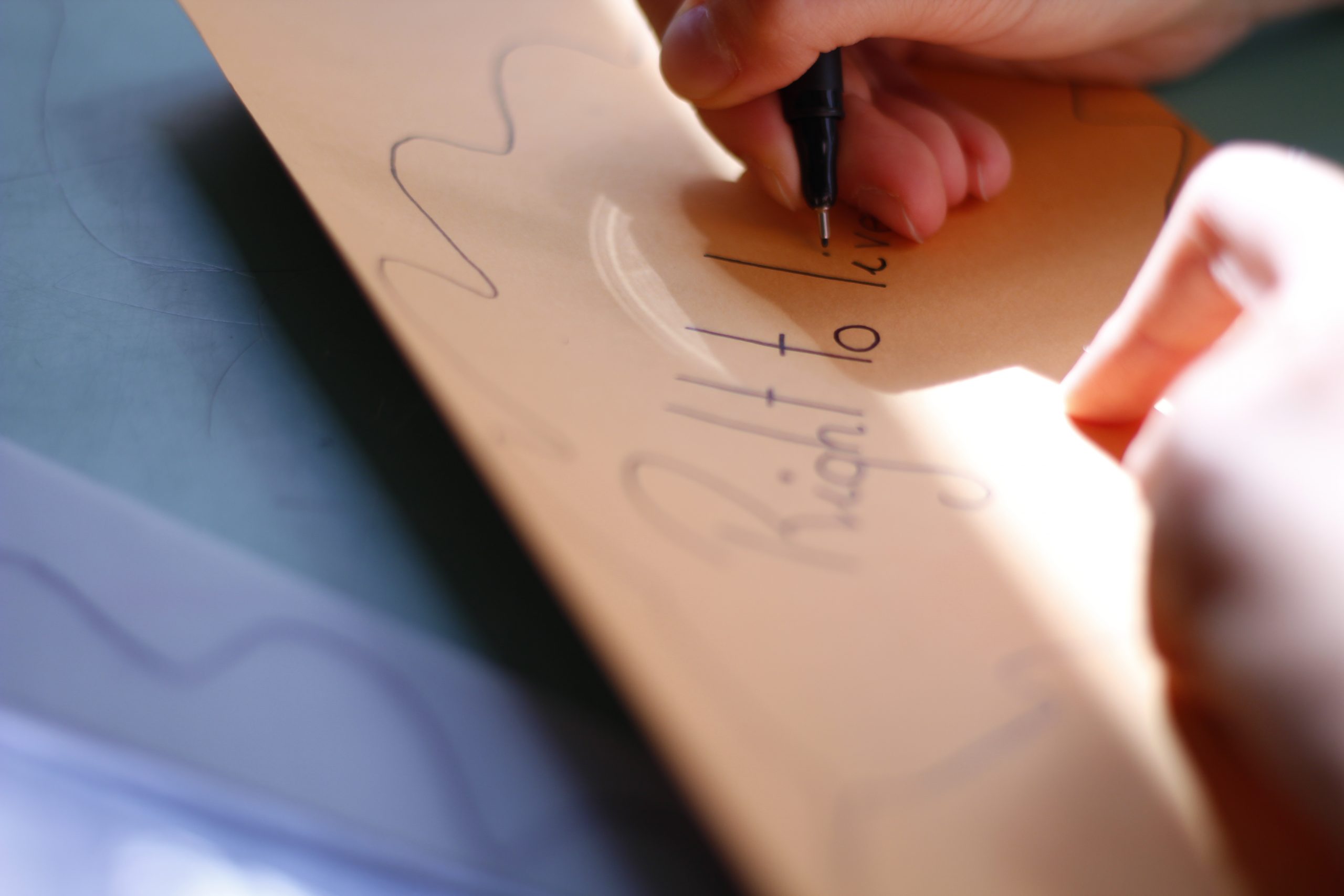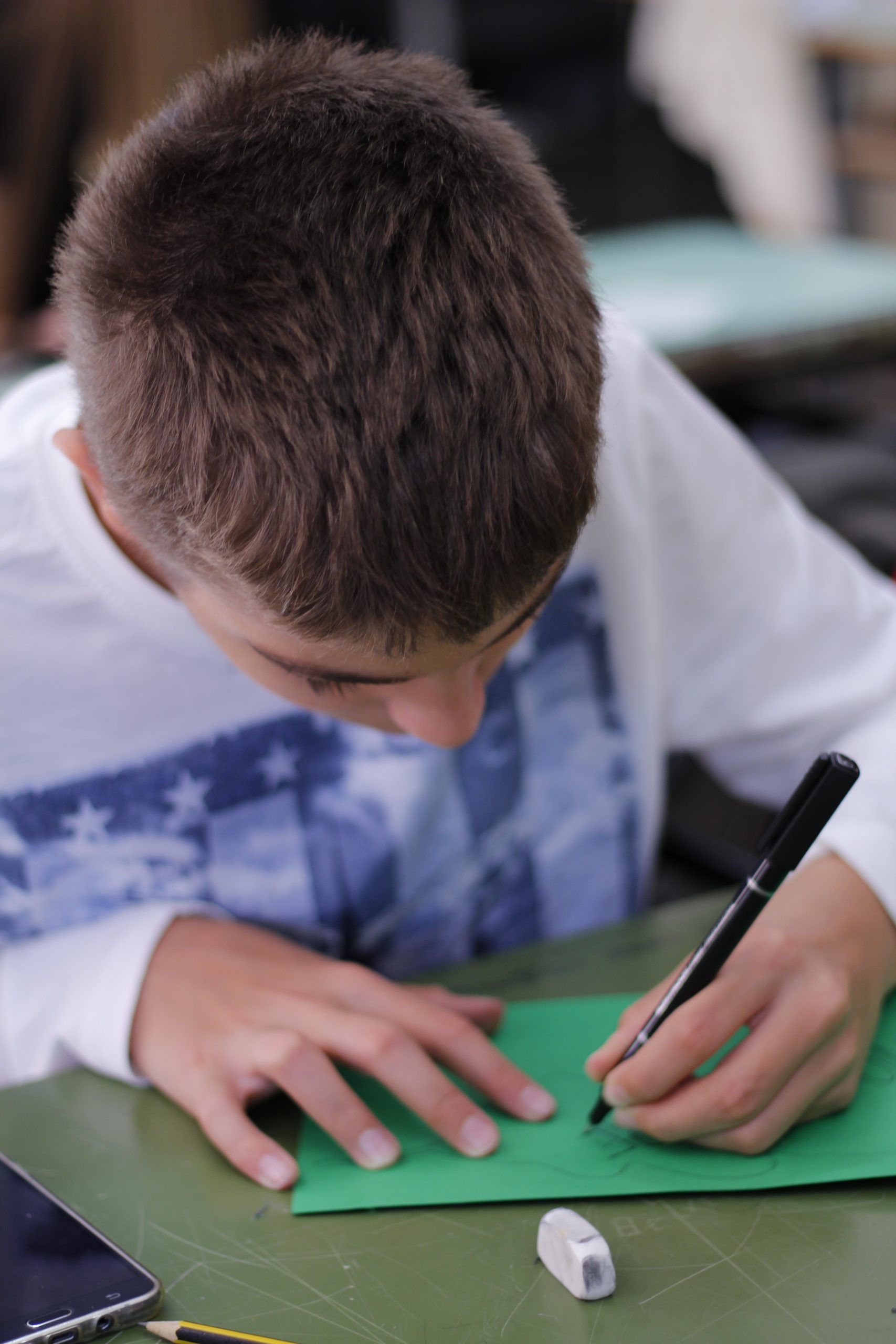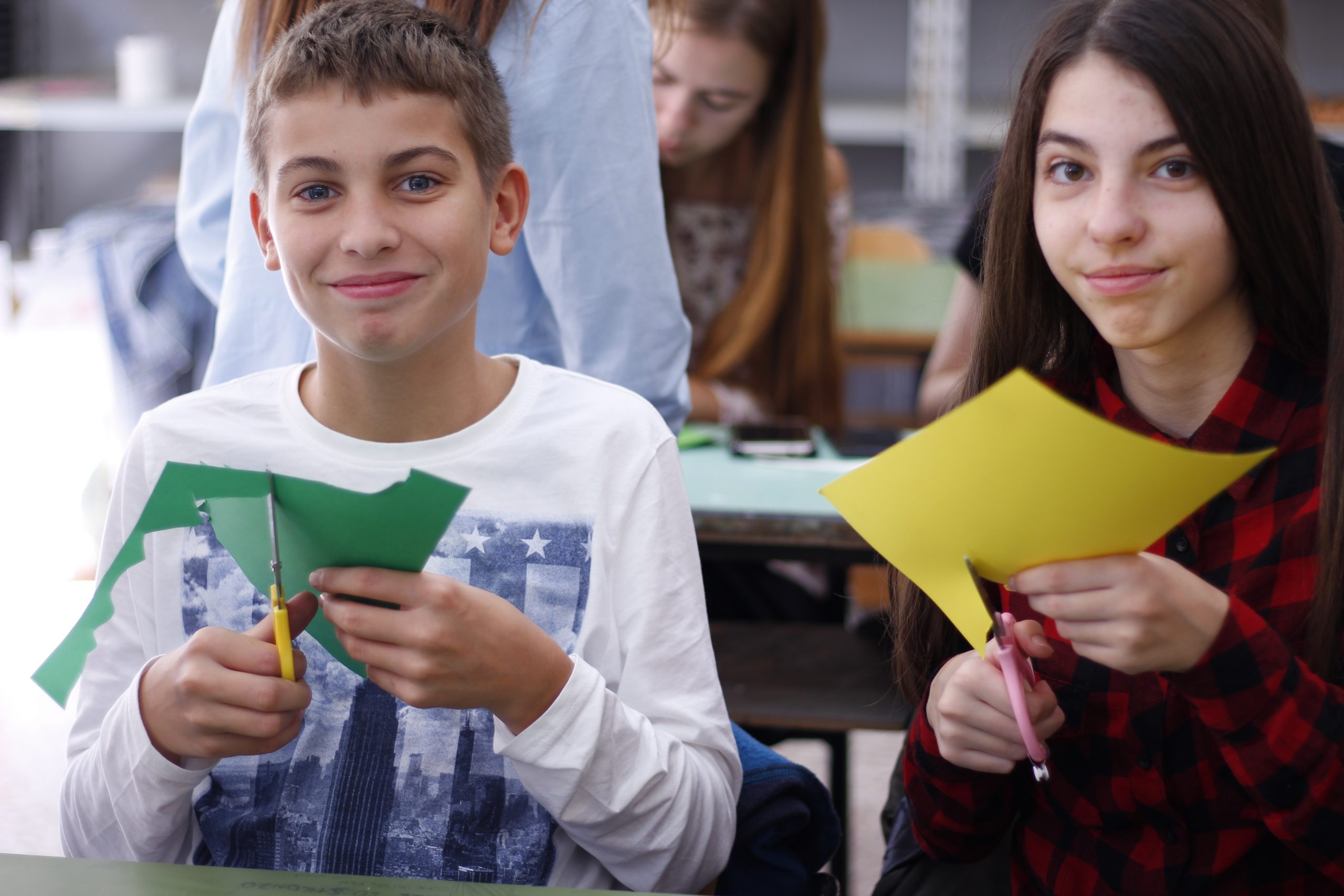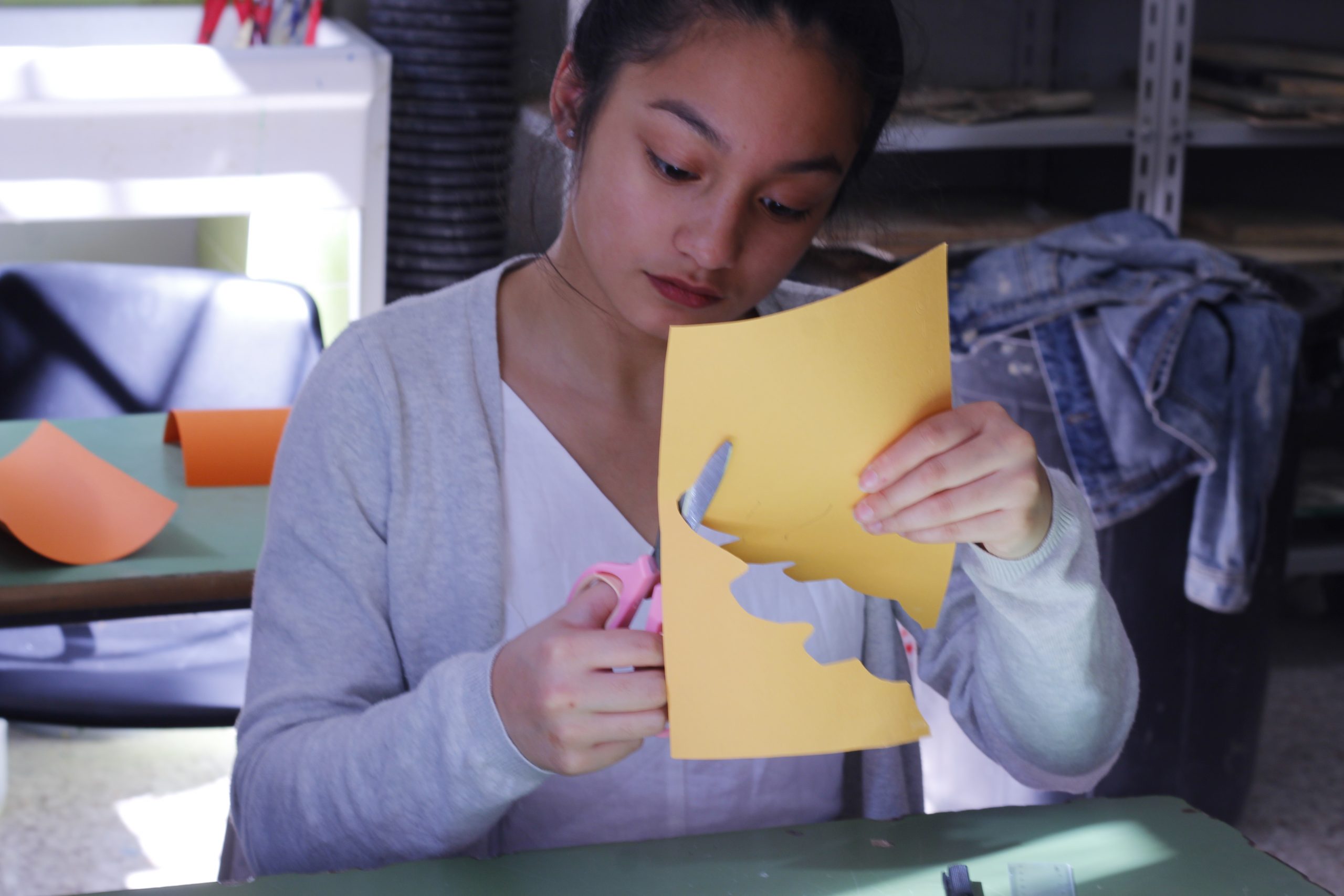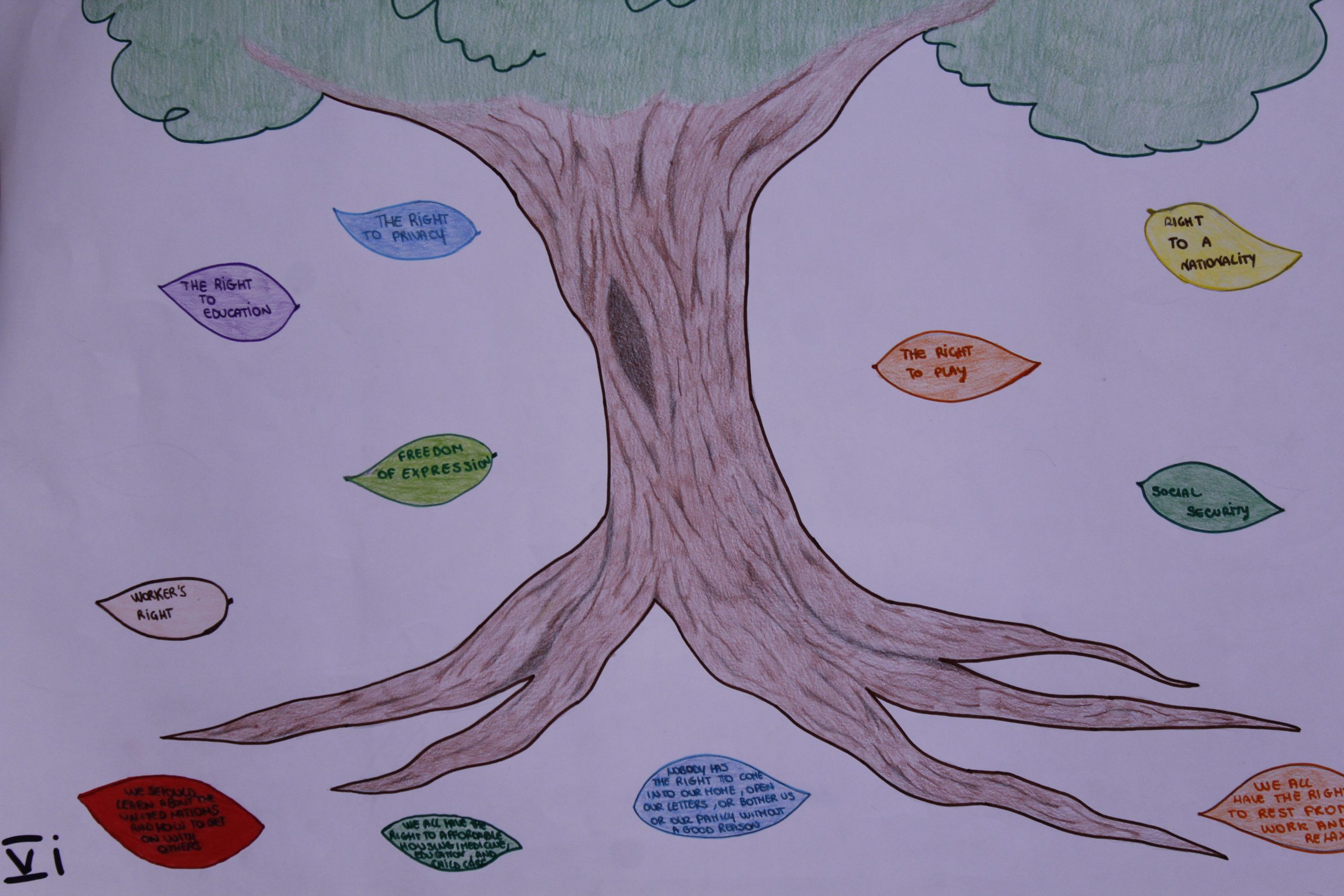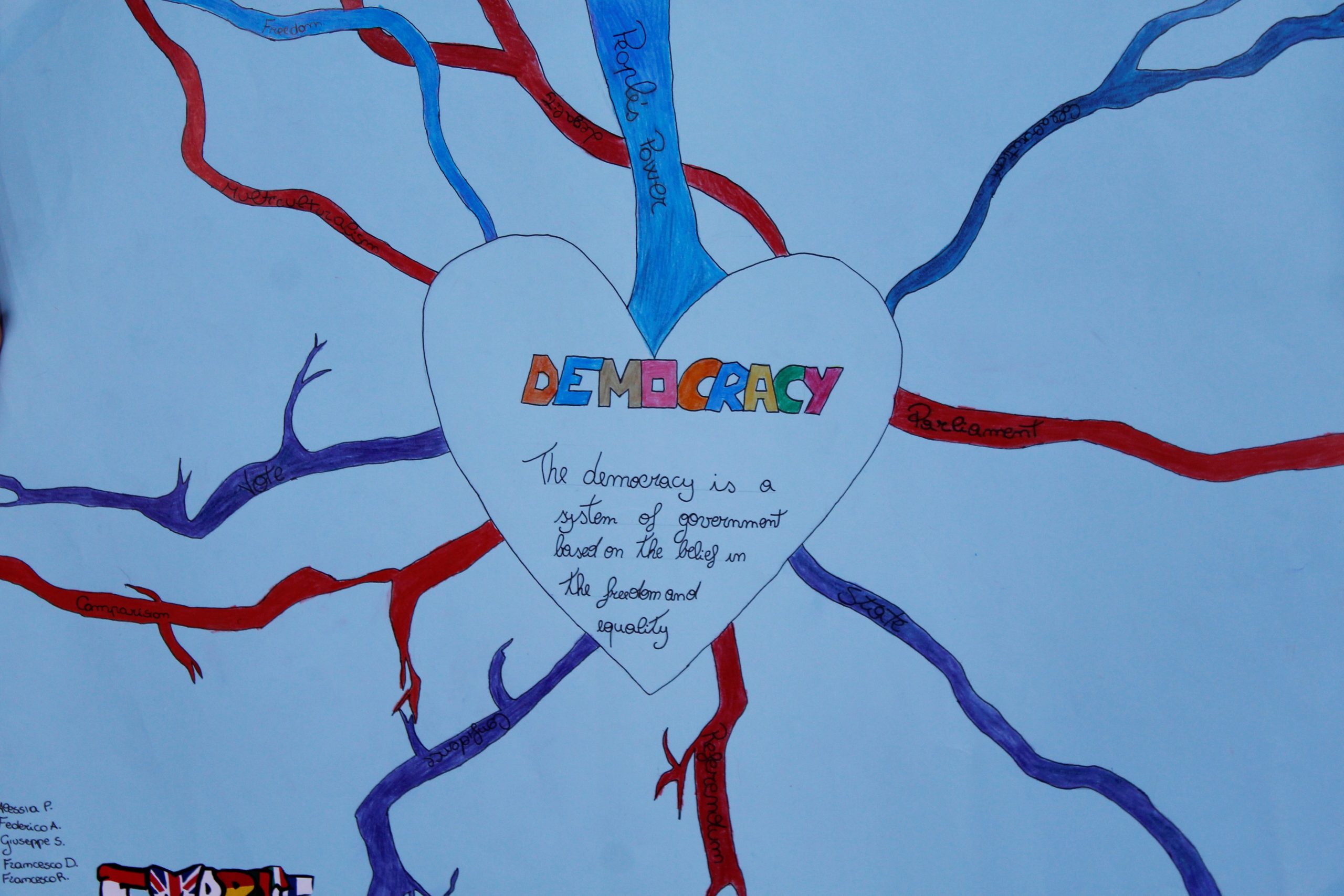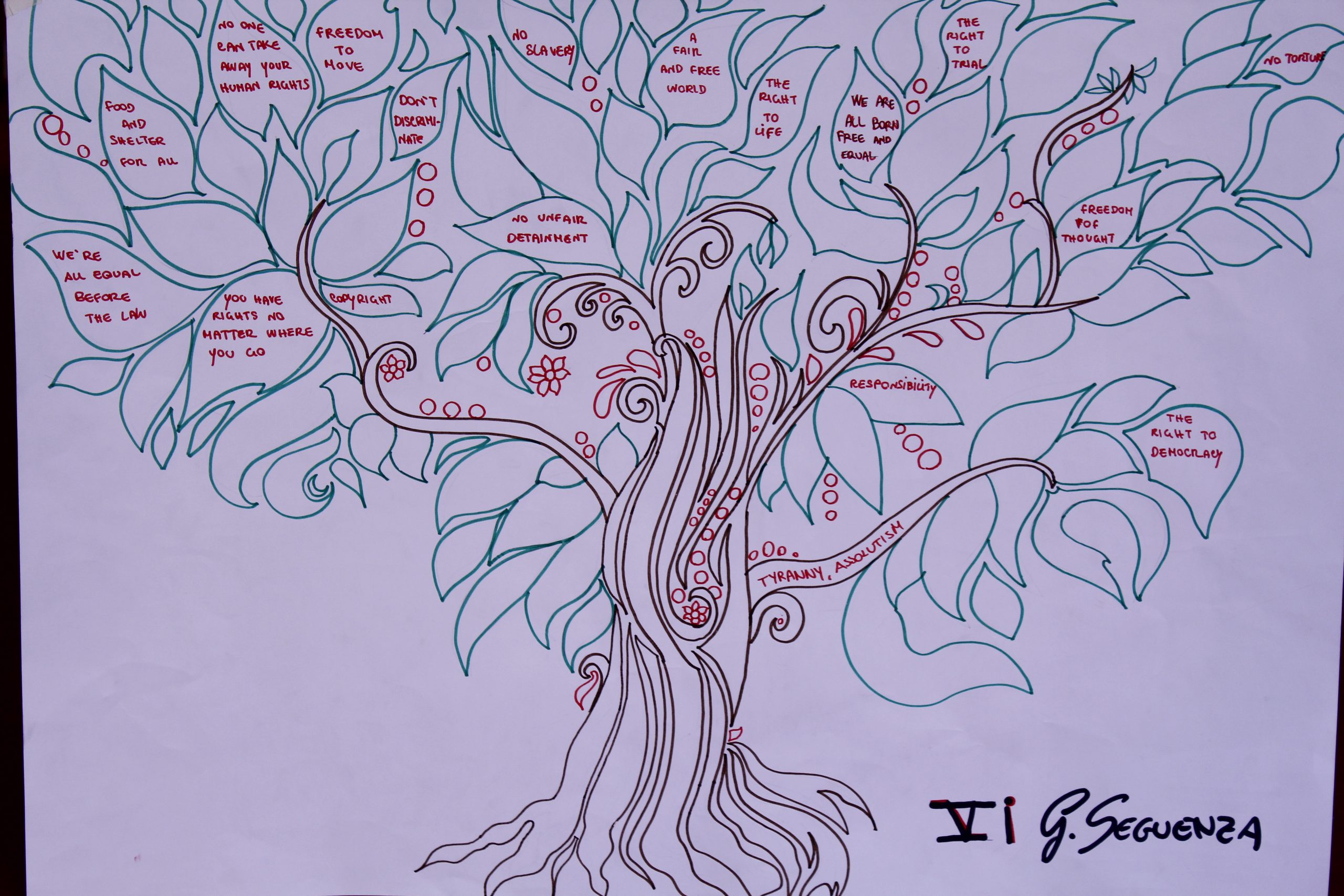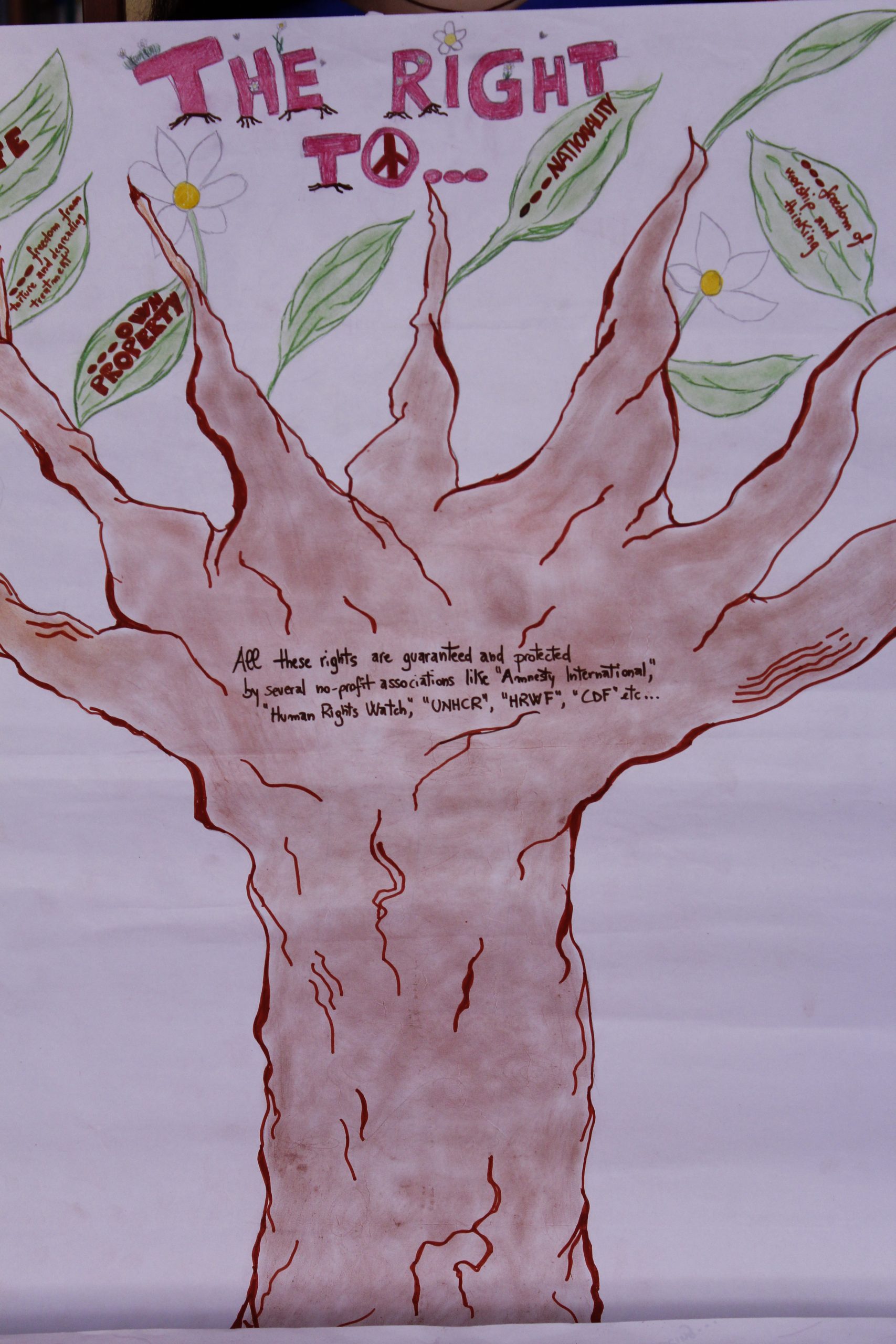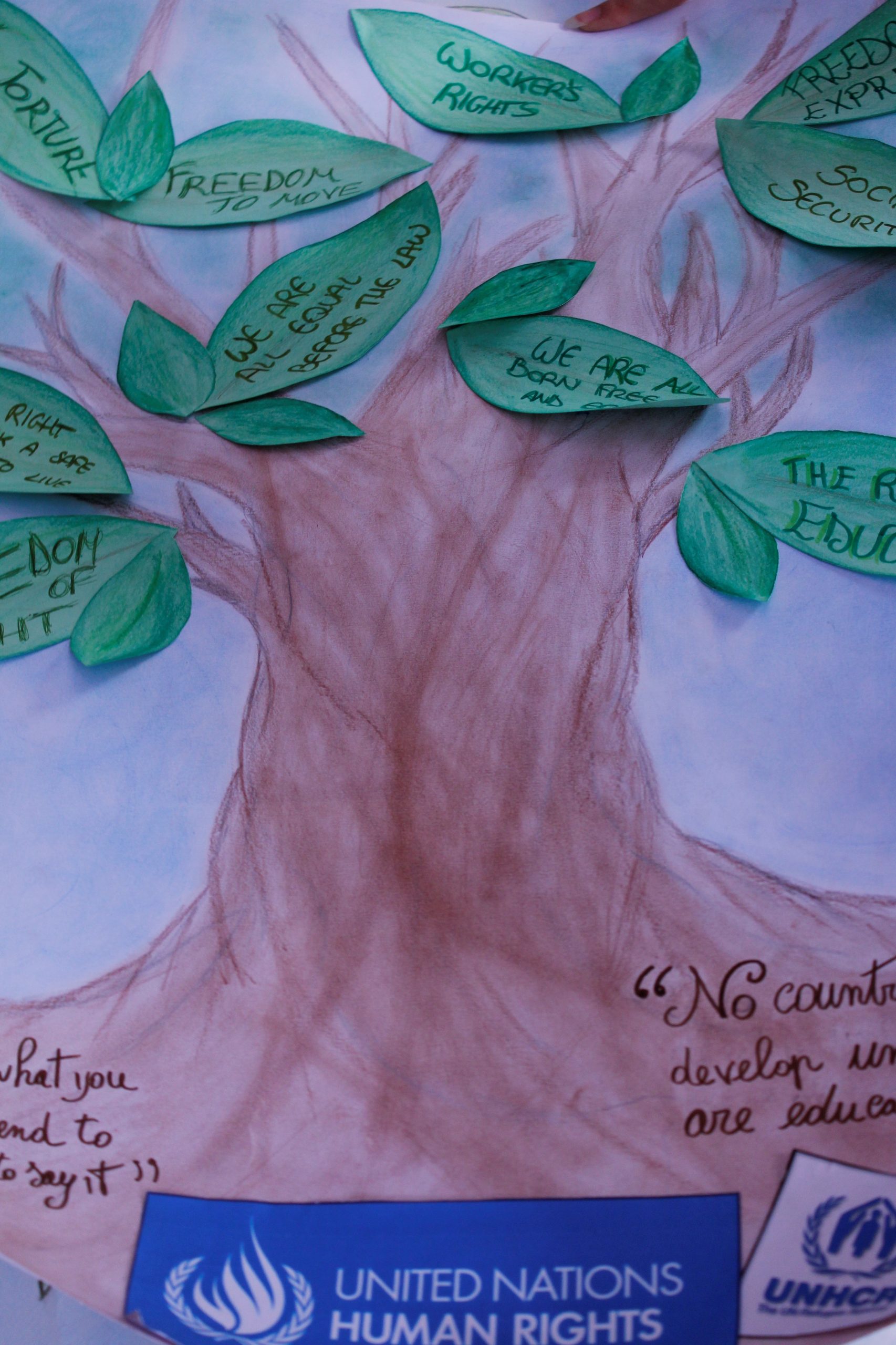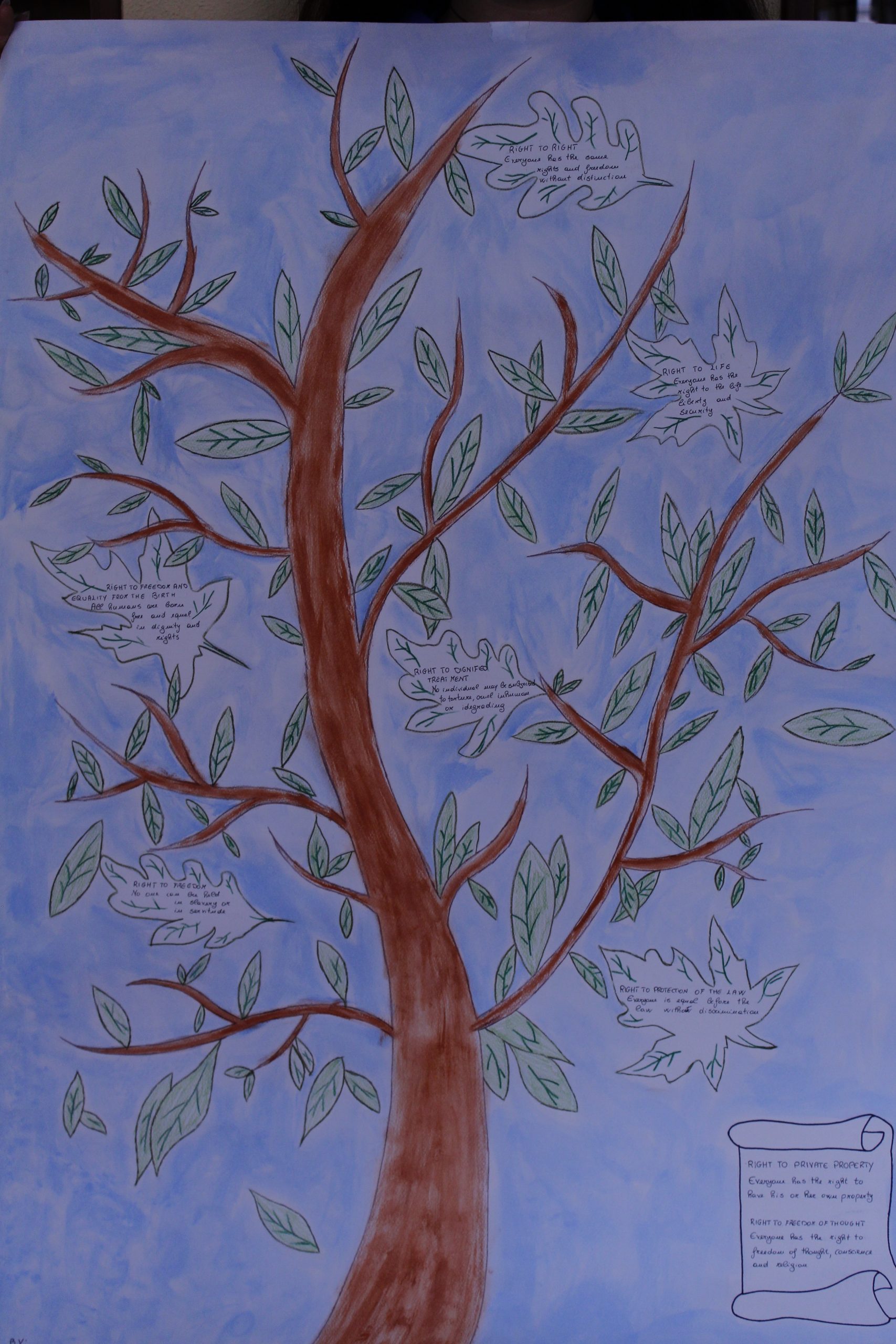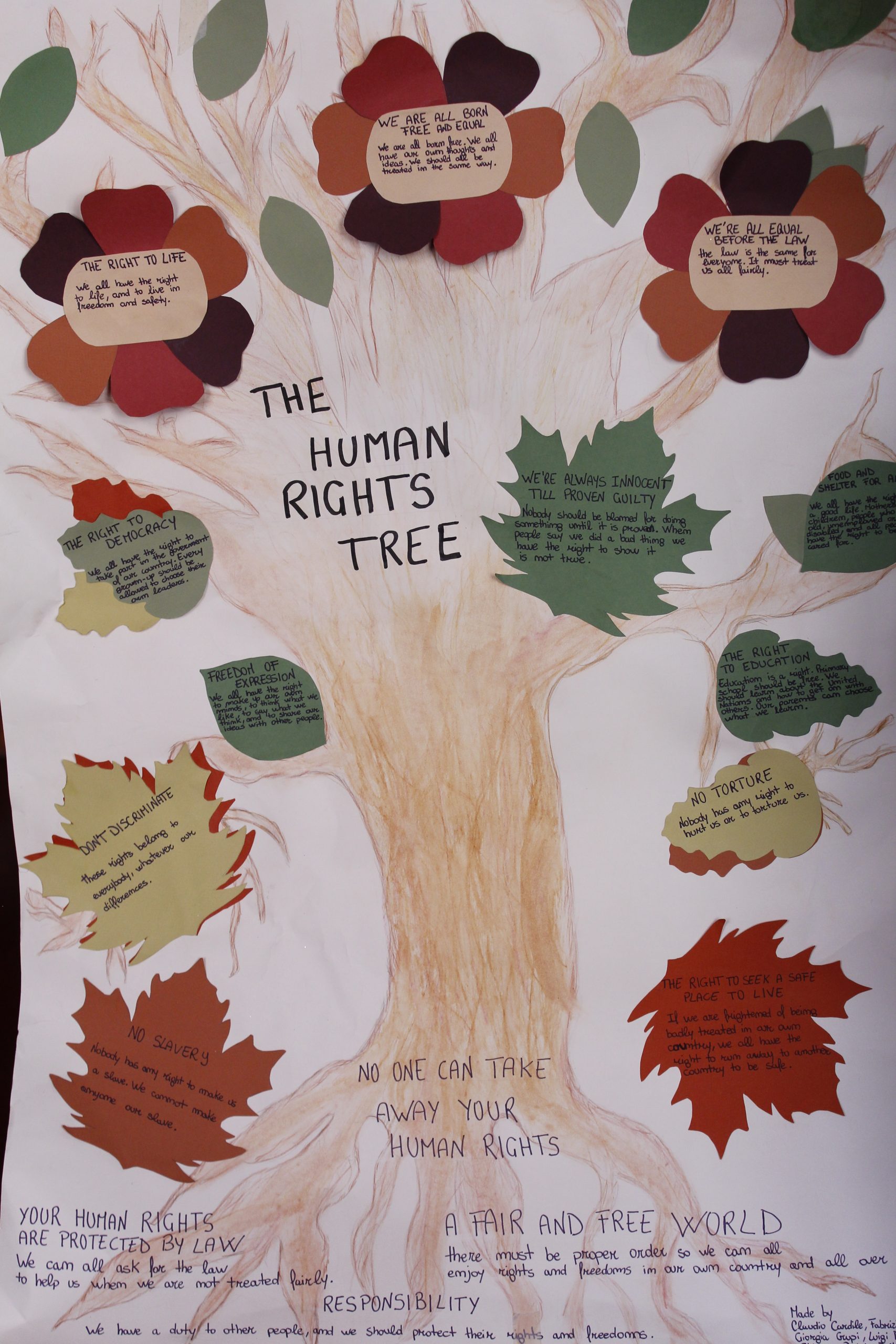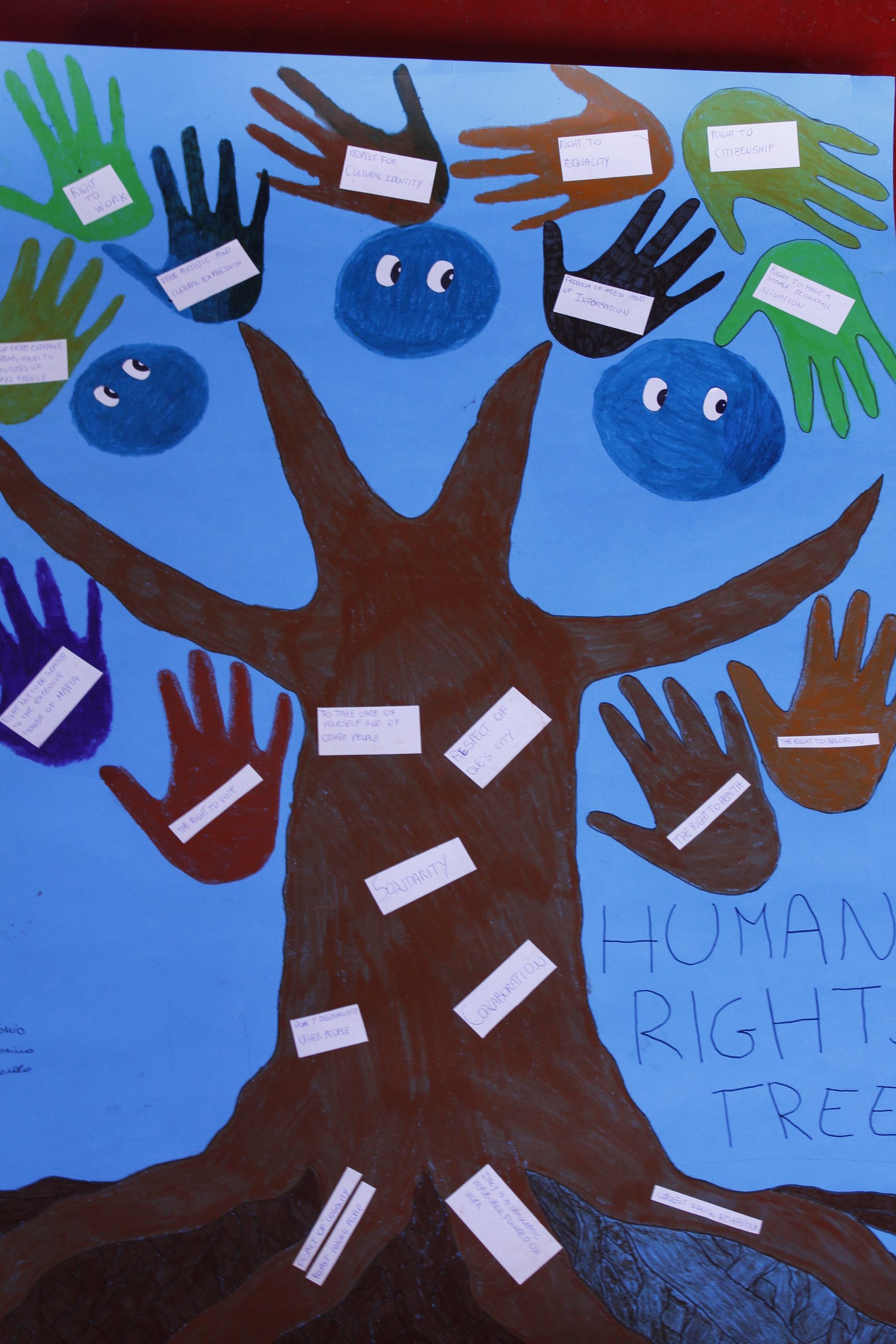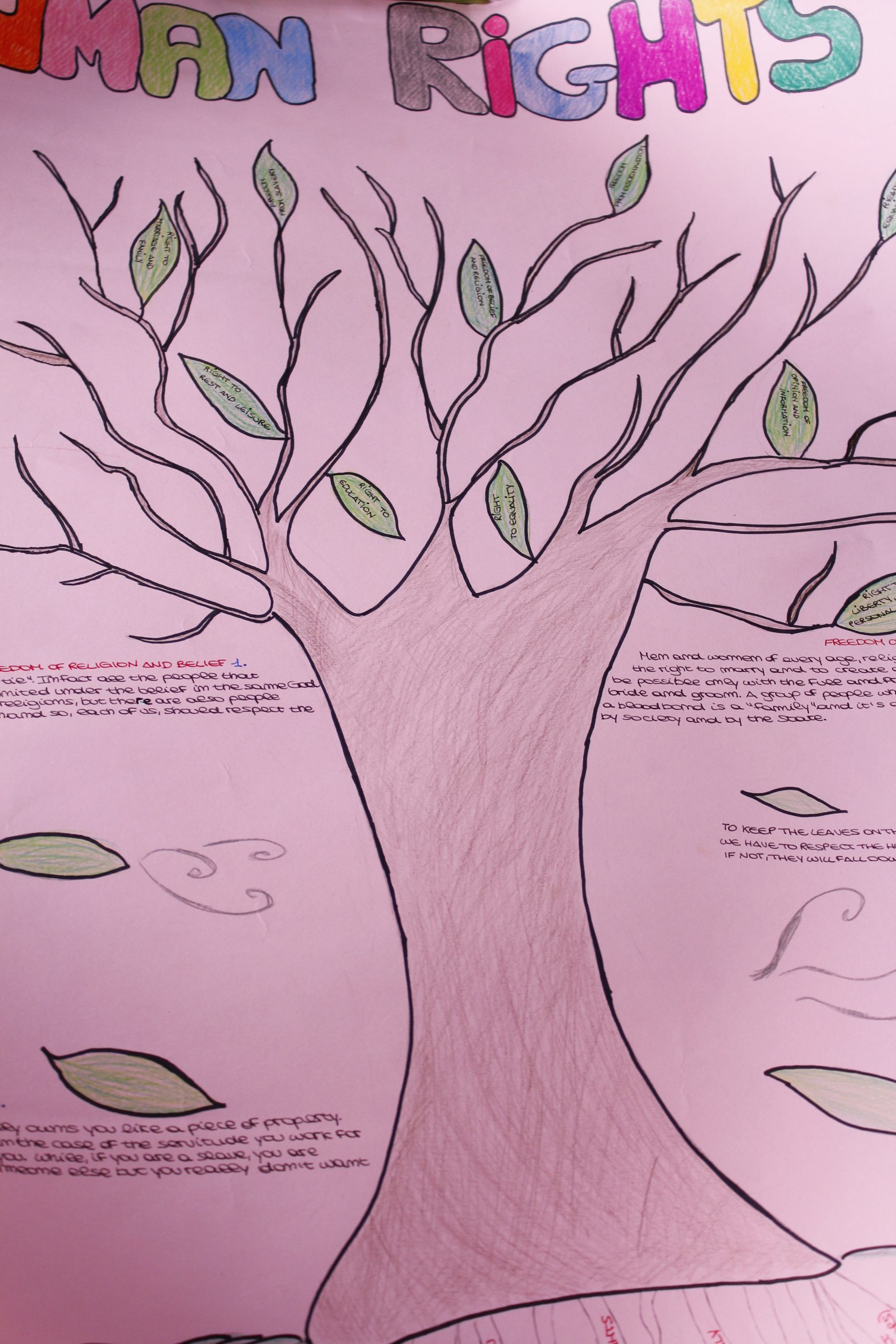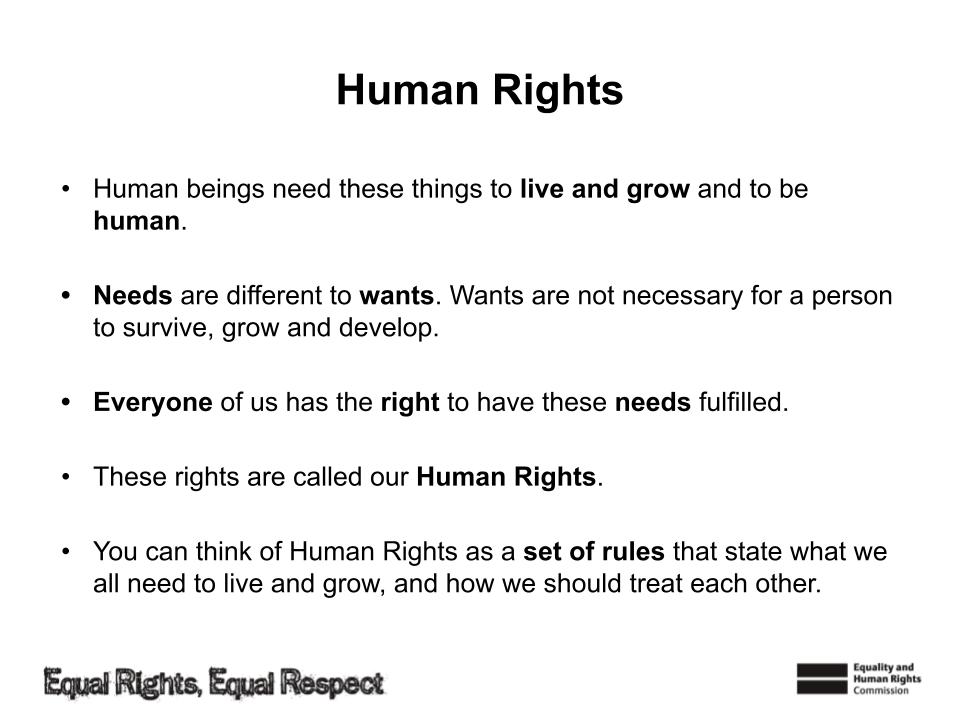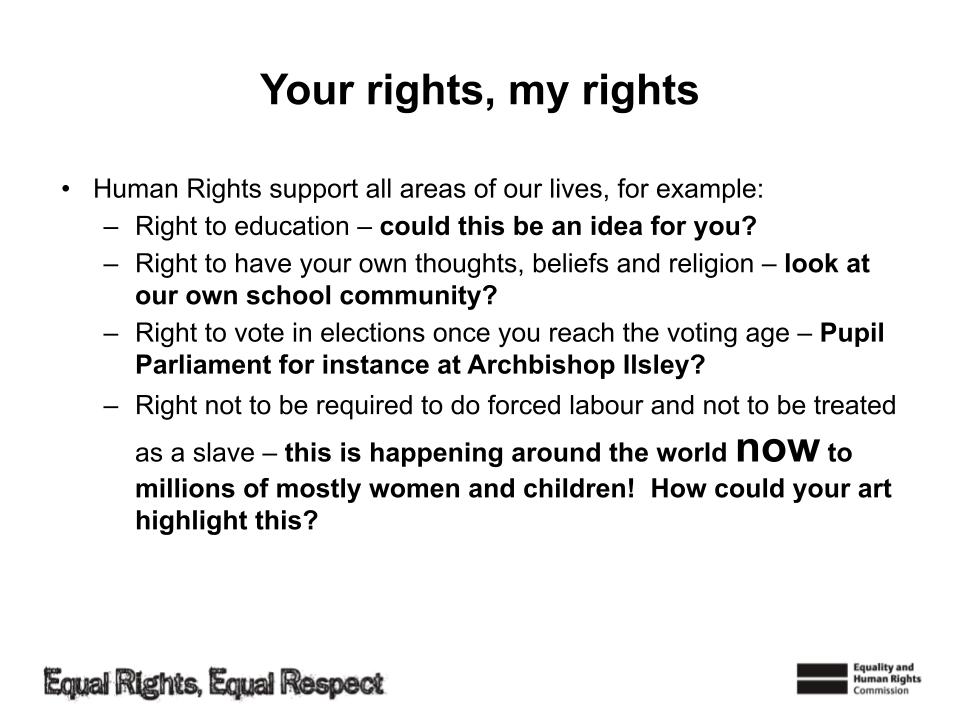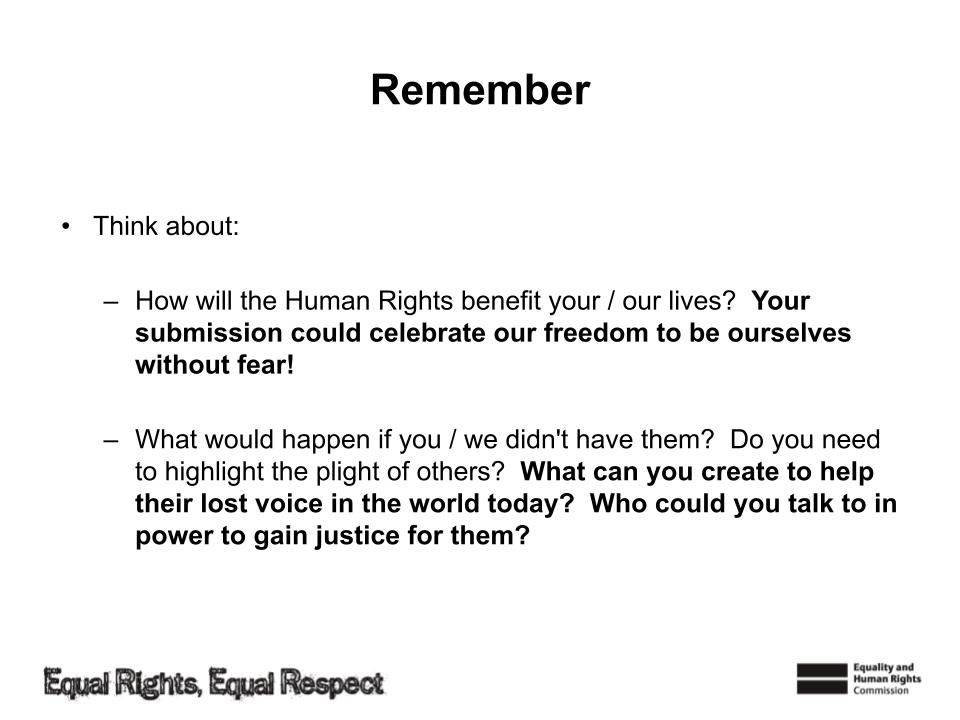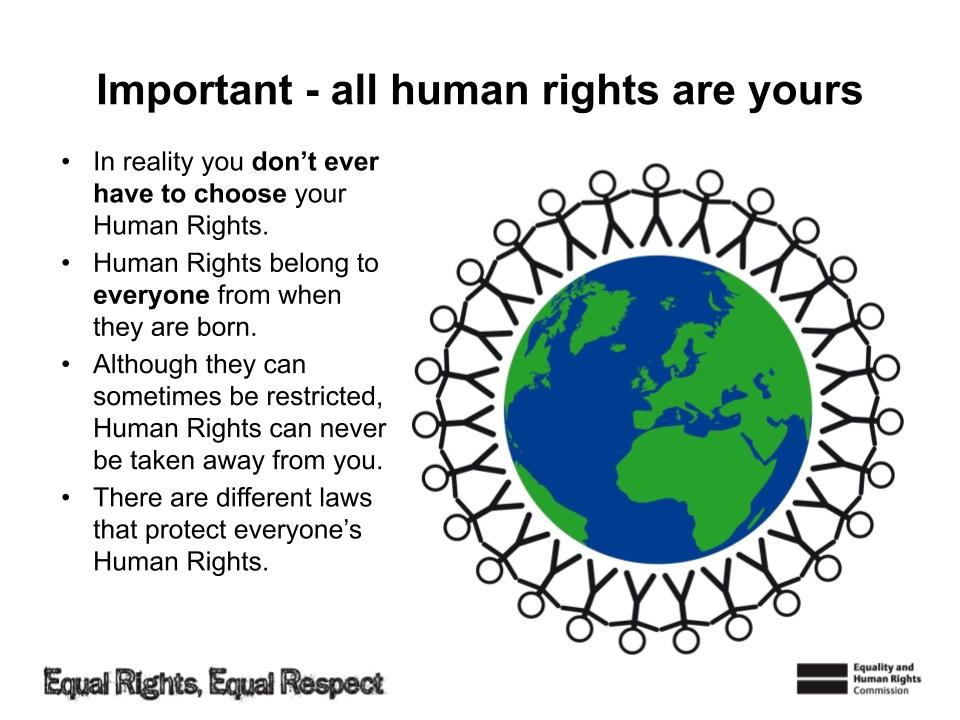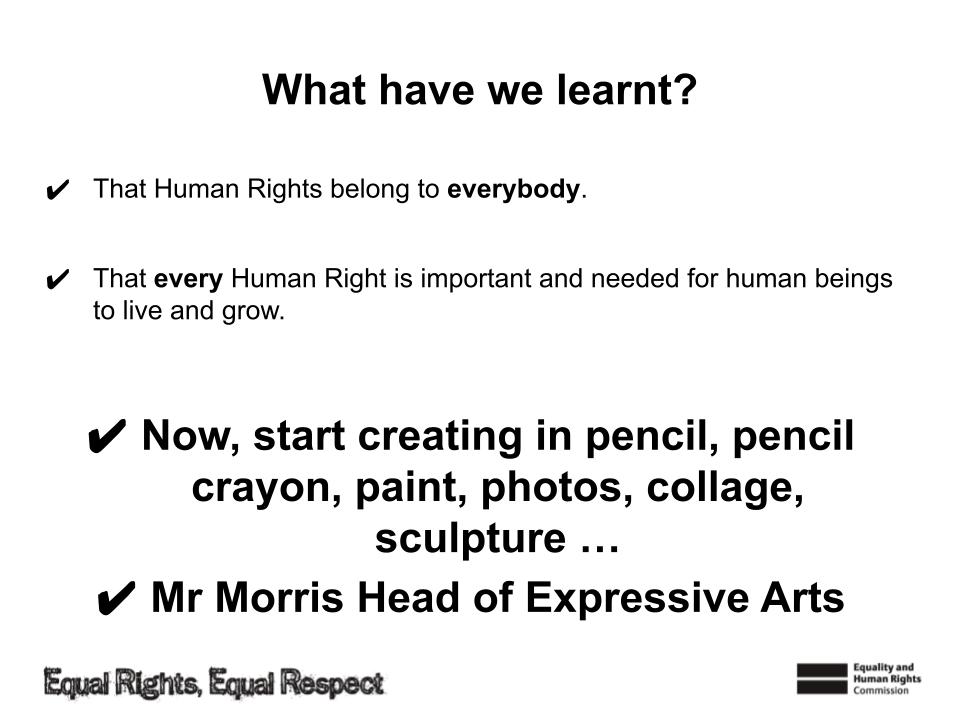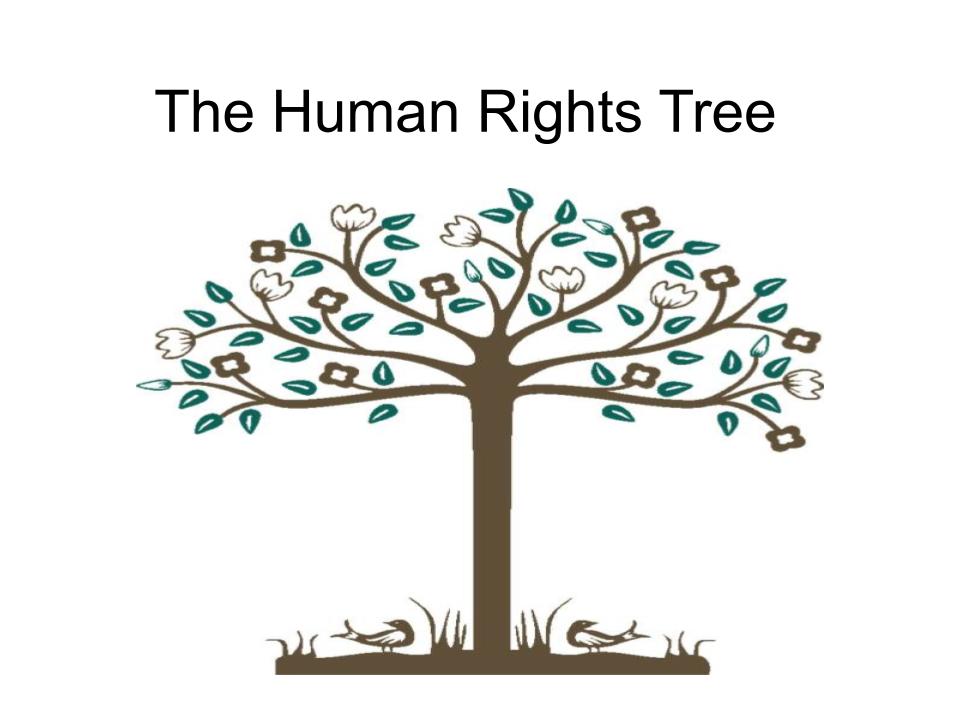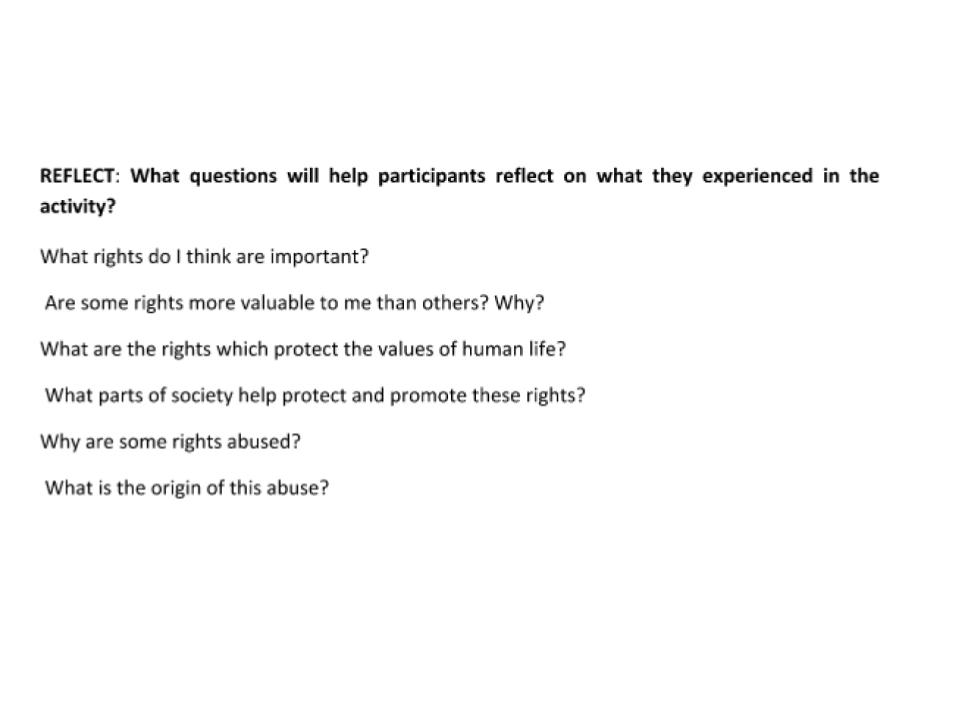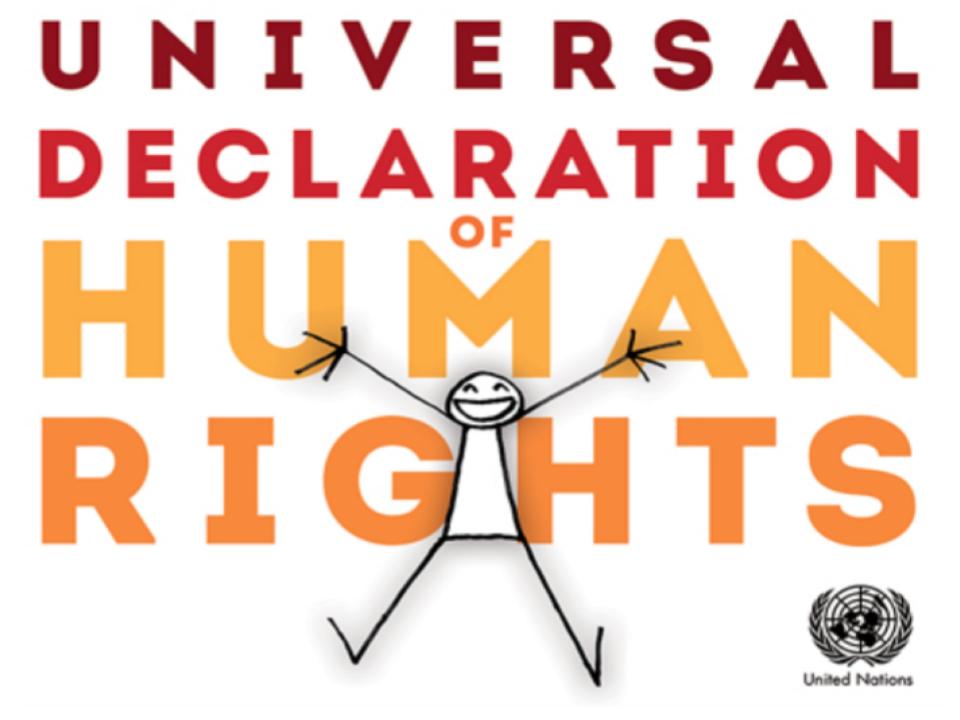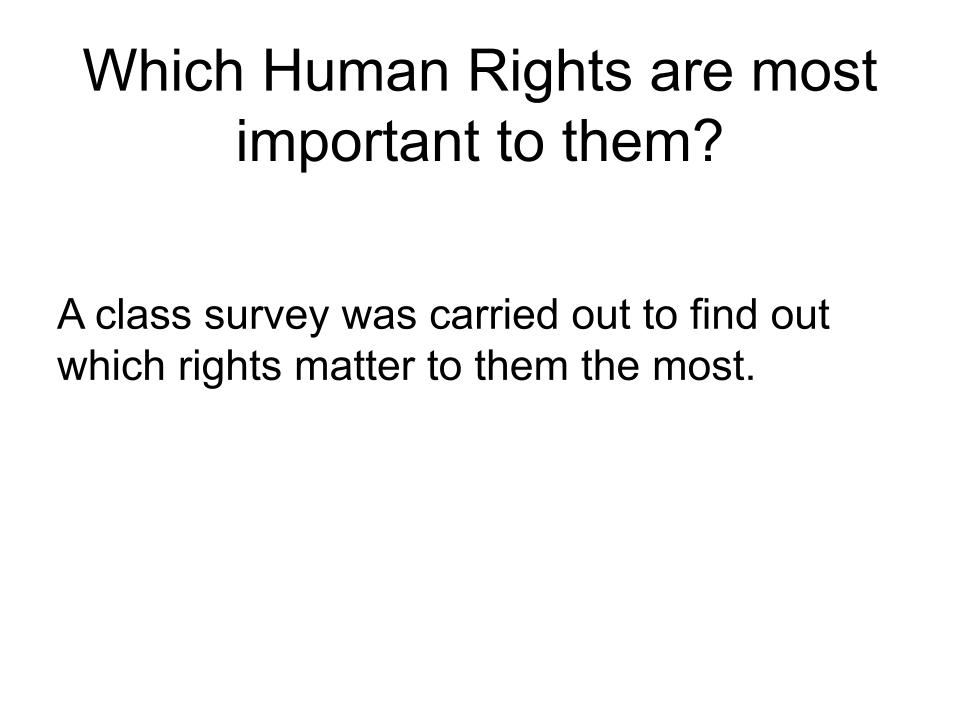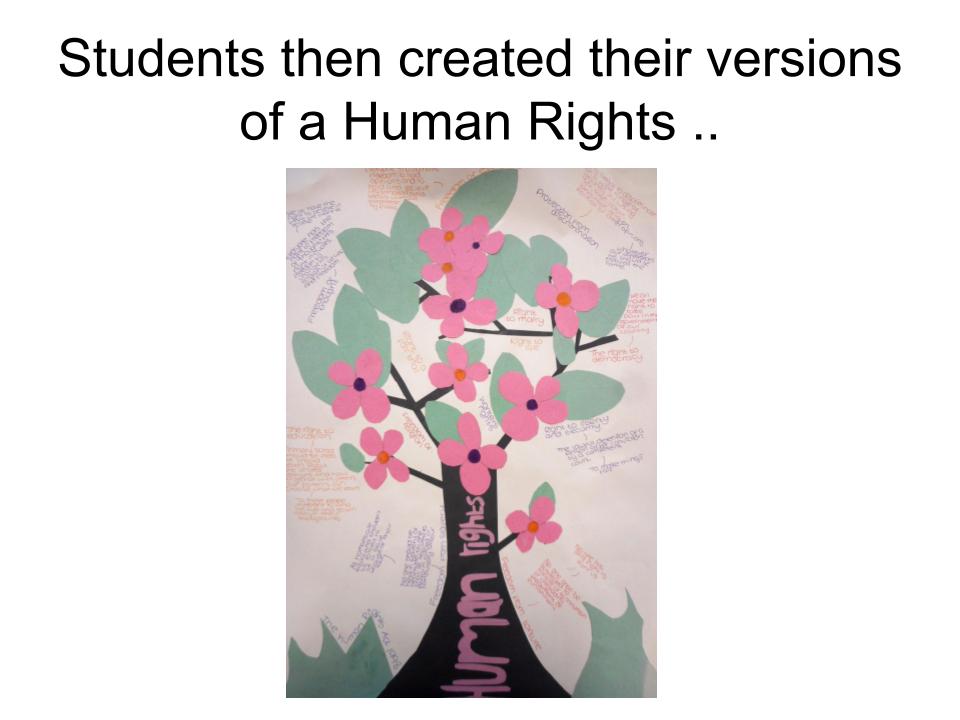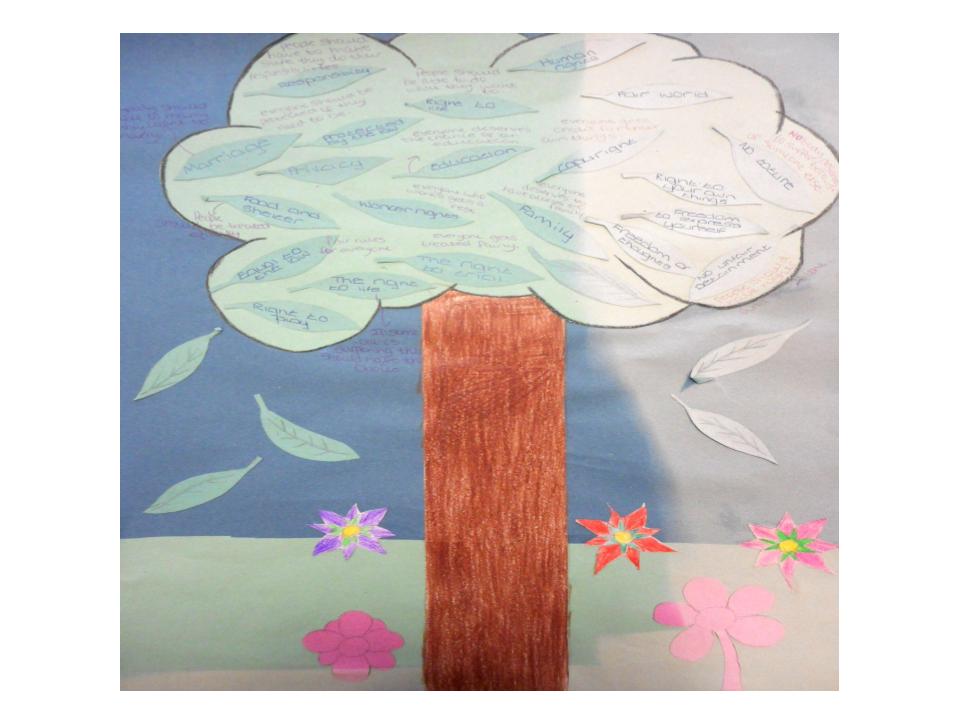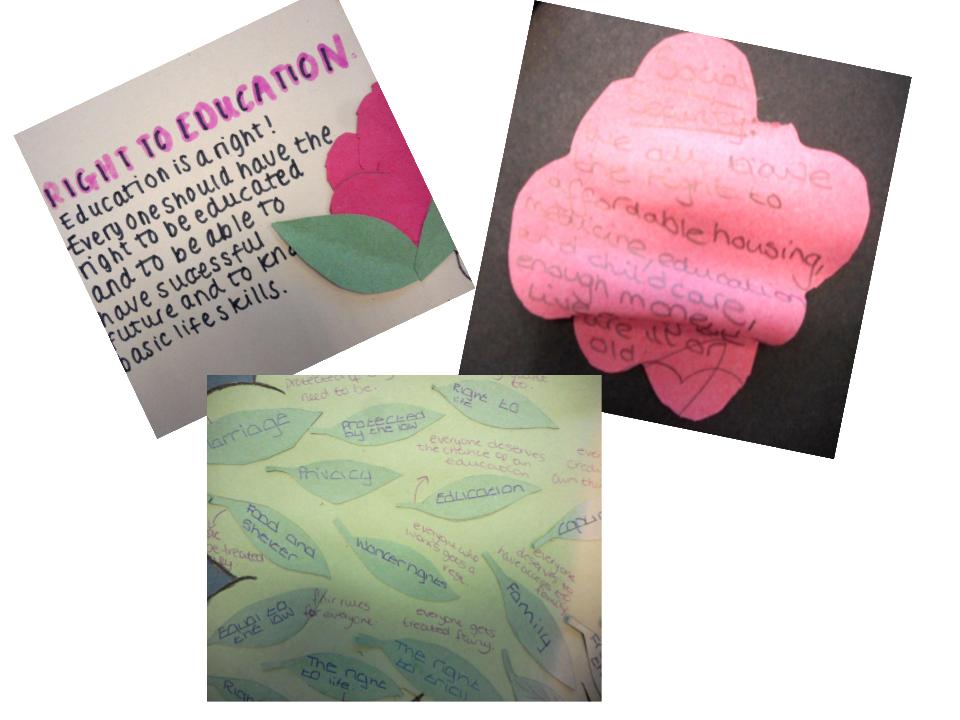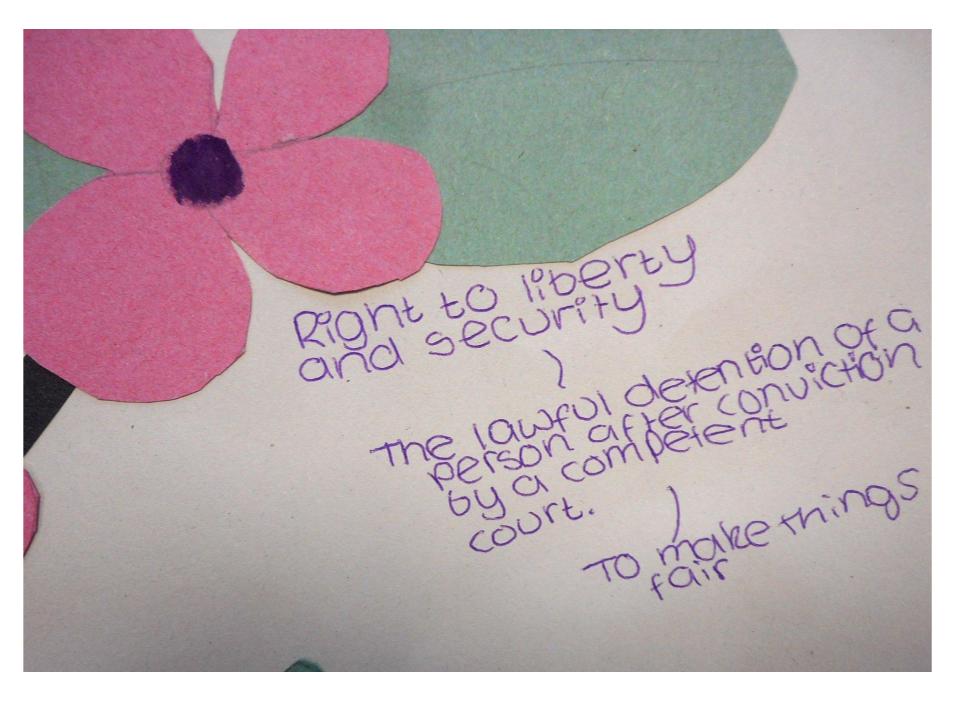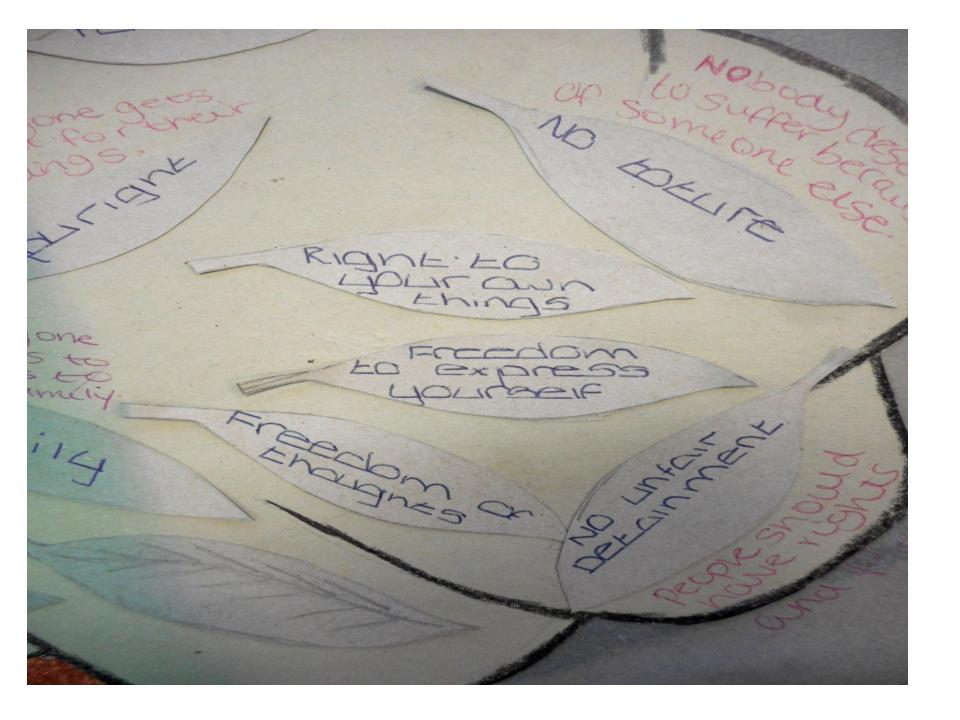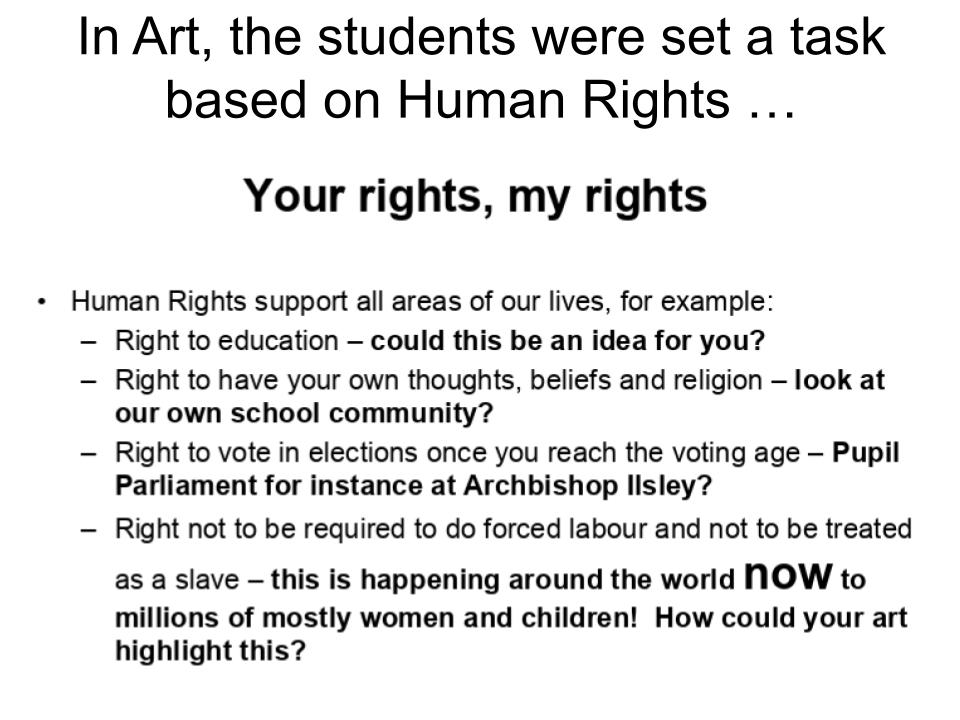Human Rights Tree
The Human Rights Tree activity involved students researching the different rights that all people should have access to.
A Human Rights Tree sculpture was created for the Italy mobility to allow students to write on leaves and attach them to the tree.
The 30 UN Human Rights were listed and discussed by students.
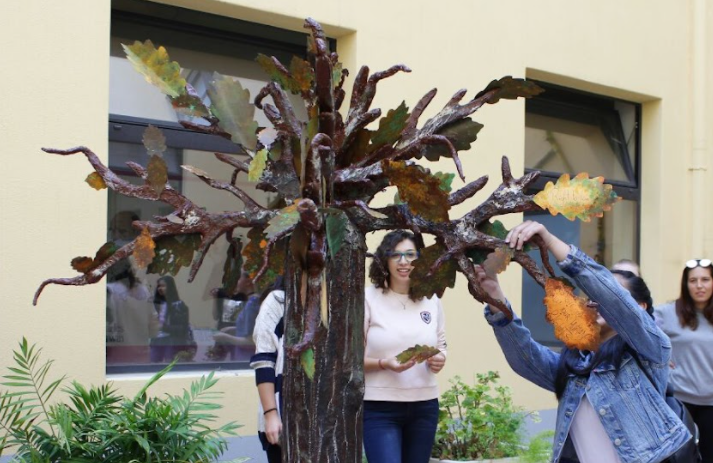
Photos of the Human Rights Tree Activity
The photos below show the Human Rights Tree sculpture that was created for the Italian mobility in 2017. You can see students attaching their human rights leaves to the tree.
The images below show the students on the mobility to Italy designing and creating artwork for the Human Rights Tree project.
The photographs below show artwork created for this activity including posters and colourful human rights tree designs.
Human Rights Tree Planning
ERASMUS+ KA 219 EMBRACE: “THE HUMAN RIGHTS TREE”
LED BY IES “RAMÓN Y CAJAL”, MURCIA, SPAIN
ACTIVITY PLANNING
BE AWARE OF THIS: While rights will probably be easier to identify, the structures in society that help protect these rights: legal system free of political influence and pressure, free universal access to education, the right to vote etc, might be more difficult for children to express even though they have the right idea. That is why they should receive support from the facilitators whenever needed in order to help express and develop their ideas.
EXPLANATION
1. Ask participants to form groups.
2. All groups will be given a chart paper and colourful pens.
3. Ask all participants to draw a tree: for branches, leaves and flowers they should write the fundamental Human Rights that they believe are necessary in each individual’s life. The roots of the tree should represent the necessary factors in society which help achieve these rights.
4. All groups should present their tree and explain the rights and the basis (roots) that they chose.
5. As the end of the presentations a universal tree of human rights should be drawn, containing all the rights found by all groups as branches, leaves and flowers, and all the social structures necessary to achieve them as roots.
6. The tree should be displayed in public for the remaining of the camp
REFLECT: What questions will help participants reflect on what they experienced in the activity?
What rights do I think are important?
Are some rights more valuable to me than others? Why?
What are the rights which protect the values of human life?
What parts of society help protect and promote these rights?
Why are some rights abused?
What is the origin of this abuse?
What questions will encourage the participants to think about how they can apply their learning in different contexts and situations?
How can I promote human rights?
How can I help protect the value of human rights?
UNITED NATIONS
UNIVERSAL DECLARATION OF HUMAN RIGHTS
Simplified Version
This simplified version of the 30 Articles of the Universal Declaration of Human Rights has been created especially for young people.
1. We Are All Born Free & Equal. We are all born free. We all have our own thoughts and ideas. We should all be treated in the same way.
2. Don’t Discriminate. These rights belong to everybody, whatever our differences.
3. The Right to Life. We all have the right to life, and to live in freedom and safety.
4. No Slavery. Nobody has any right to make us a slave. We cannot make anyone our slave.
5. No Torture. Nobody has any right to hurt us or to torture us.
6. You Have Rights No Matter Where You Go. I am a person just like you!
7. We’re All Equal Before the Law. The law is the same for everyone. It must treat us all fairly.
8. Your Human Rights Are Protected by Law. We can all ask for the law to help us when we are not treated fairly.
9. No Unfair Detainment. Nobody has the right to put us in prison without good reason and keep us there, or to send us away from our country.
10. The Right to Trial. If we are put on trial this should be in public. The people who try us should not let anyone tell them what to do.
11. We’re Always Innocent Till Proven Guilty. Nobody should be blamed for doing something until it is proven. When people say we did a bad thing we have the right to show it is not true.
12. The Right to Privacy. Nobody should try to harm our good name. Nobody has the right to come into our home, open our letters, or bother us or our family without a good reason.
13. Freedom to Move. We all have the right to go where we want in our own country and to travel as we wish.
14. The Right to Seek a Safe Place to Live. If we are frightened of being badly treated in our own country, we all have the right to run away to another country to be safe.
15. Right to a Nationality. We all have the right to belong to a country.
16. Marriage and Family. Every grown-up has the right to marry and have a family if they want to. Men and women have the same rights when they are married, and when they are separated.
17. The Right to Your Own Things. Everyone has the right to own things or share them. Nobody should take our things from us without a good reason.
18. Freedom of Thought. We all have the right to believe in what we want to believe, to have a religion, or to change it if we want.
19. Freedom of Expression. We all have the right to make up our own minds, to think what we like, to say what we think, and to share our ideas with other people.
20. The Right to Public Assembly. We all have the right to meet our friends and to work together in peace to defend our rights. Nobody can make us join a group if we don’t want to.
21. The Right to Democracy. We all have the right to take part in the government of our country. Every grown-up should be allowed to choose their own leaders.
22. Social Security. We all have the right to affordable housing, medicine, education, and childcare, enough money to live on and medical help if we are ill or old.
23. Workers’ Rights. Every grown-up has the right to do a job, to a fair wage for their work, and to join a trade union.
24. The Right to Play. We all have the right to rest from work and to relax.
25. Food and Shelter for All. We all have the right to a good life. Mothers and children, people who are old, unemployed or disabled, and all people have the right to be cared for.
26. The Right to Education. Education is a right. Primary school should be free. We should learn about the United Nations and how to get on with others. Our parents can choose what we learn.
27. Copyright. Copyright is a special law that protects one’s own artistic creations and writings; others cannot make copies without permission. We all have the right to our own way of life and to enjoy the good things that art, science and learning bring.
28. A Fair and Free World. There must be proper order so we can all enjoy rights and freedoms in our own country and all over the world.
29. Responsibility. We have a duty to other people, and we should protect their rights and freedoms.
30. No One Can Take Away Your Human Rights.
http://www.humanrights.com/what-are-human-rights/
Human Rights illustrated version: http://www.un.org/en/udhrbook/
Human Rights Presentation
To the right is a presentation that was shown to students to get them to think about what human rights are, and the importance of everyone being able to have rights so that they can live and grow.
Human Rights Presentation for England
The presentation to the side sums up the Human Rights Tree for England, by showing what happened and displaying a number of example human rights trees that were created for the activity.
Student Review
Human Right #19 - Freedom of Expression
The right:
We all have the right to think whatever we like to think, and the right to share our ideas and thoughts with other people who think alike.
Personal view:
This is a very important right for me, because I am very shy and quiet, so I'm not always able to say what I think. But when I am able to do so, I'm relieved to know my rights to everything that I think and say. And that no one can come and tell me that I wouldn't be allowed to express my thoughts and ideas.
How society’s rules enable you to enjoy this right:
In Finland people are allowed to freely express their thoughts about life, education, government and whatever they get in their minds to think about. Though it sometimes leads to a situation where people are yelling stuff and waving big signs with texts, it's working very well in my opinion.
By Iida
